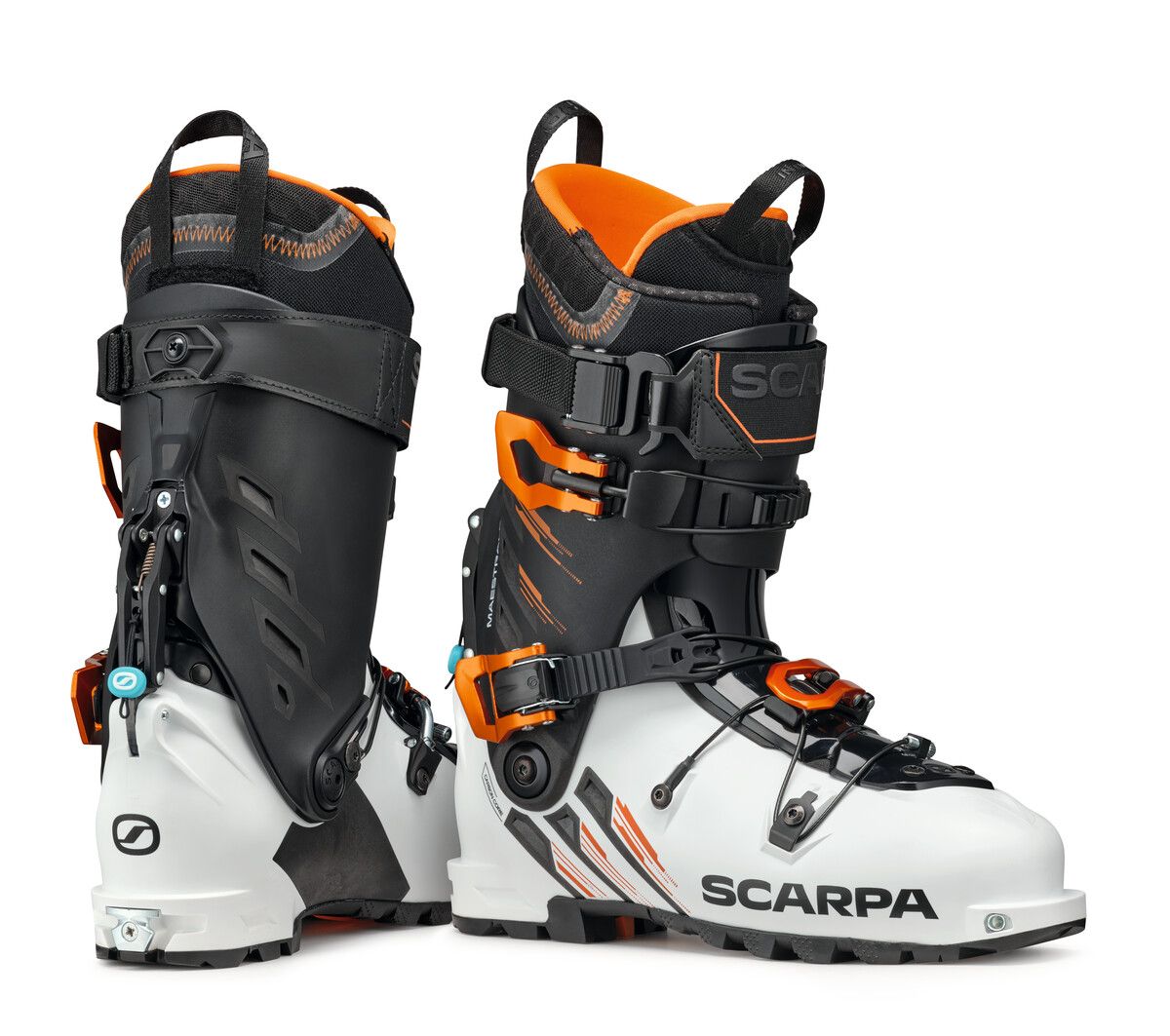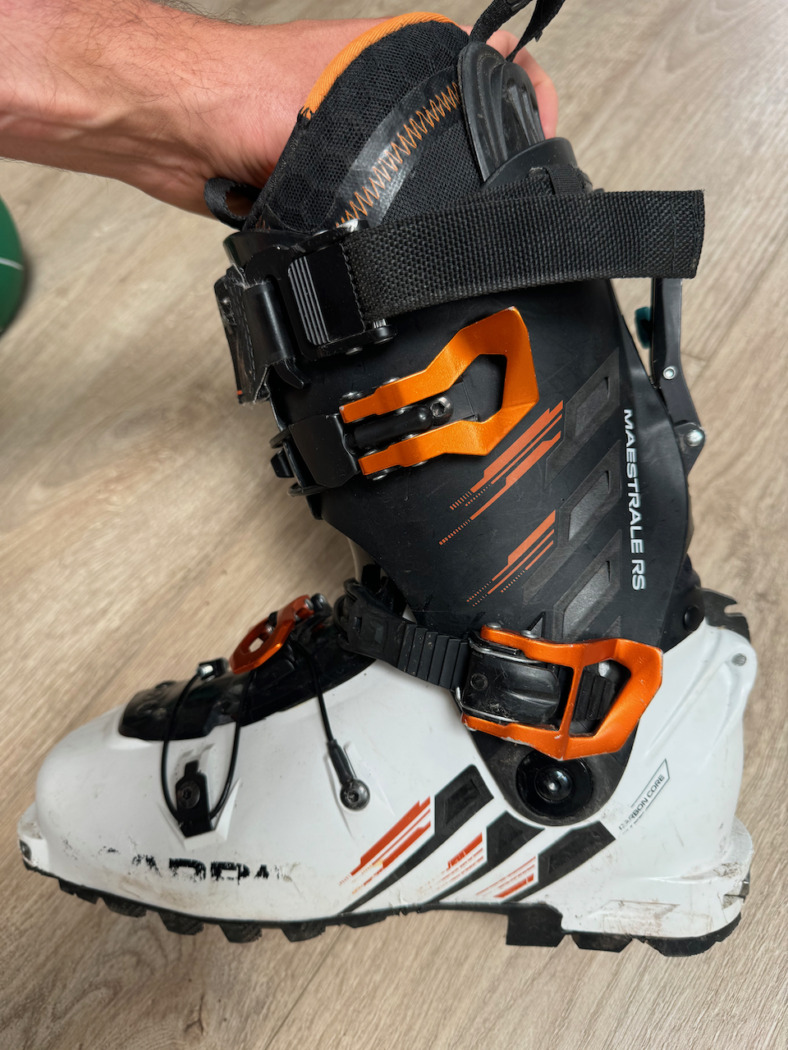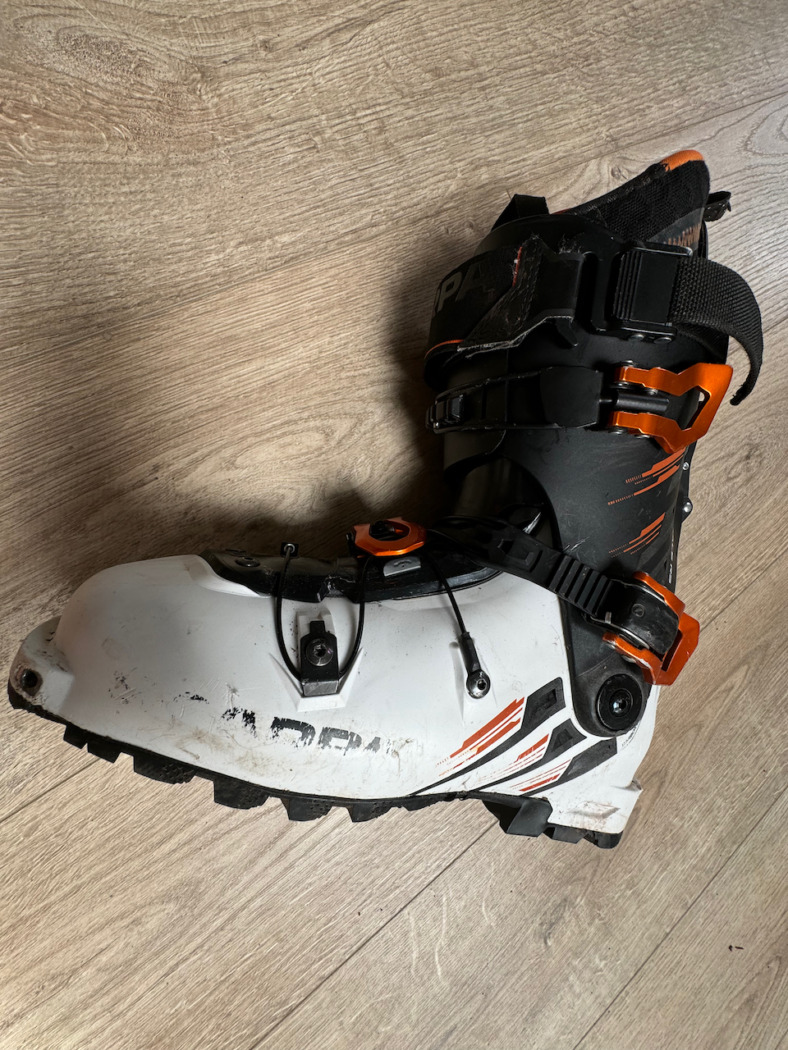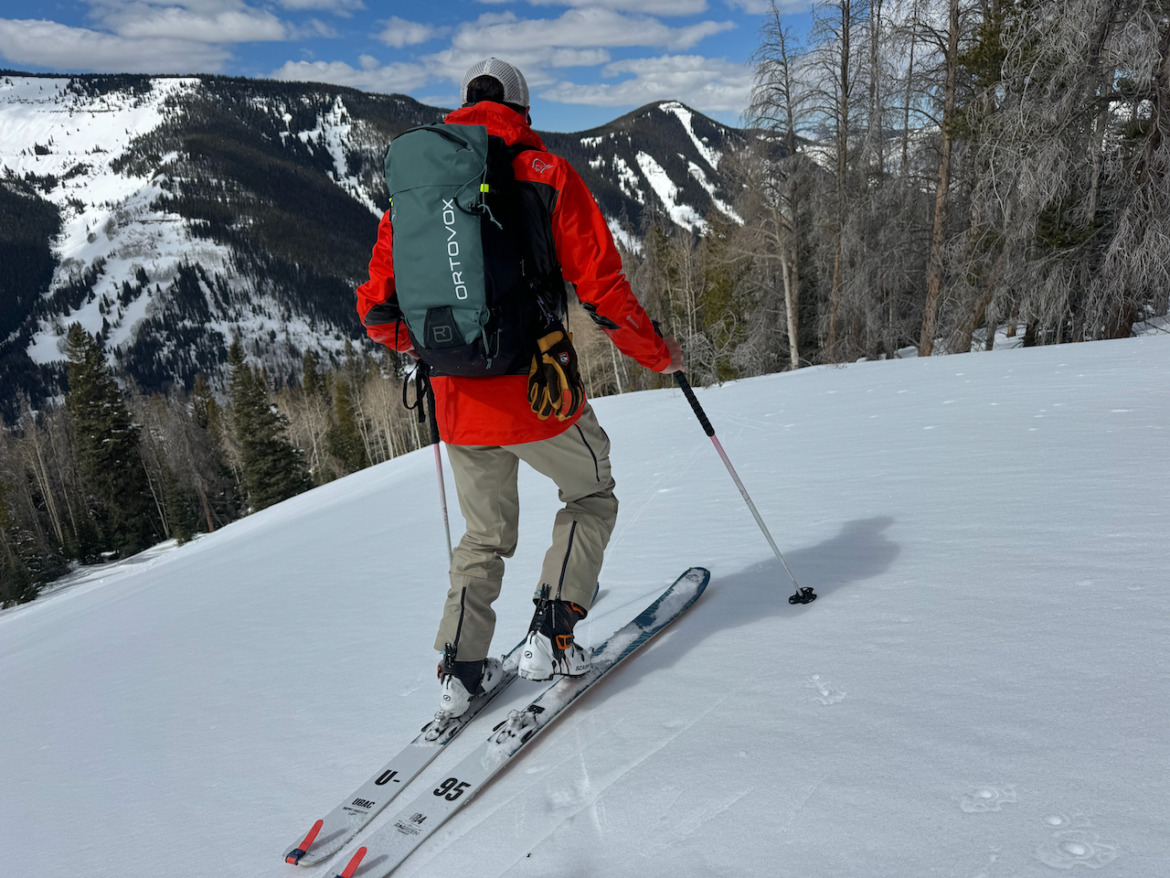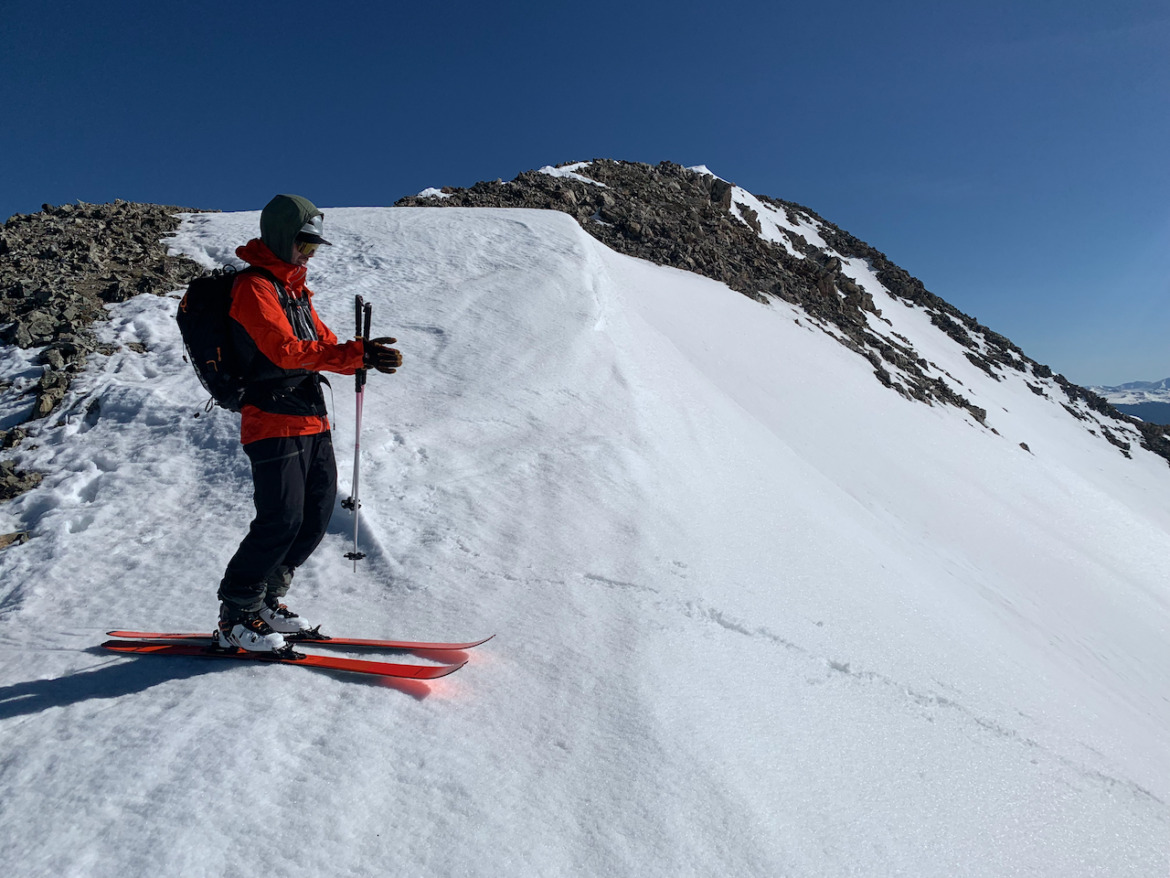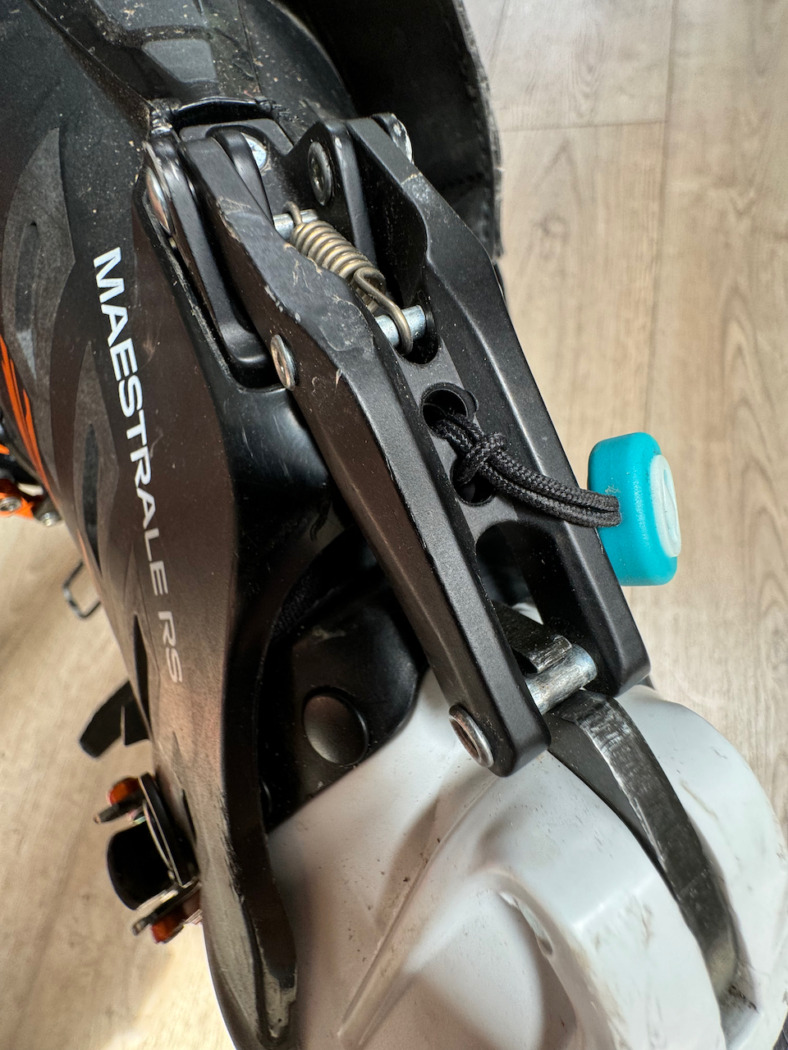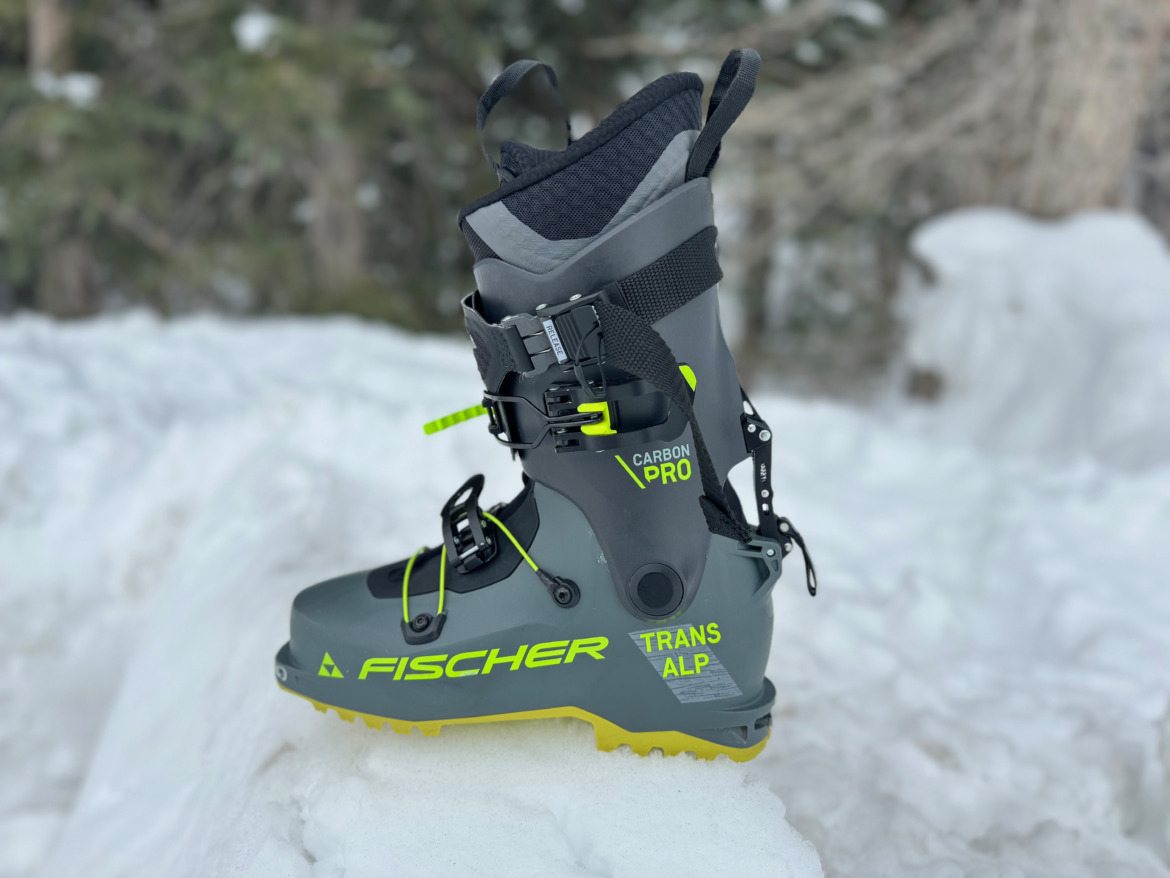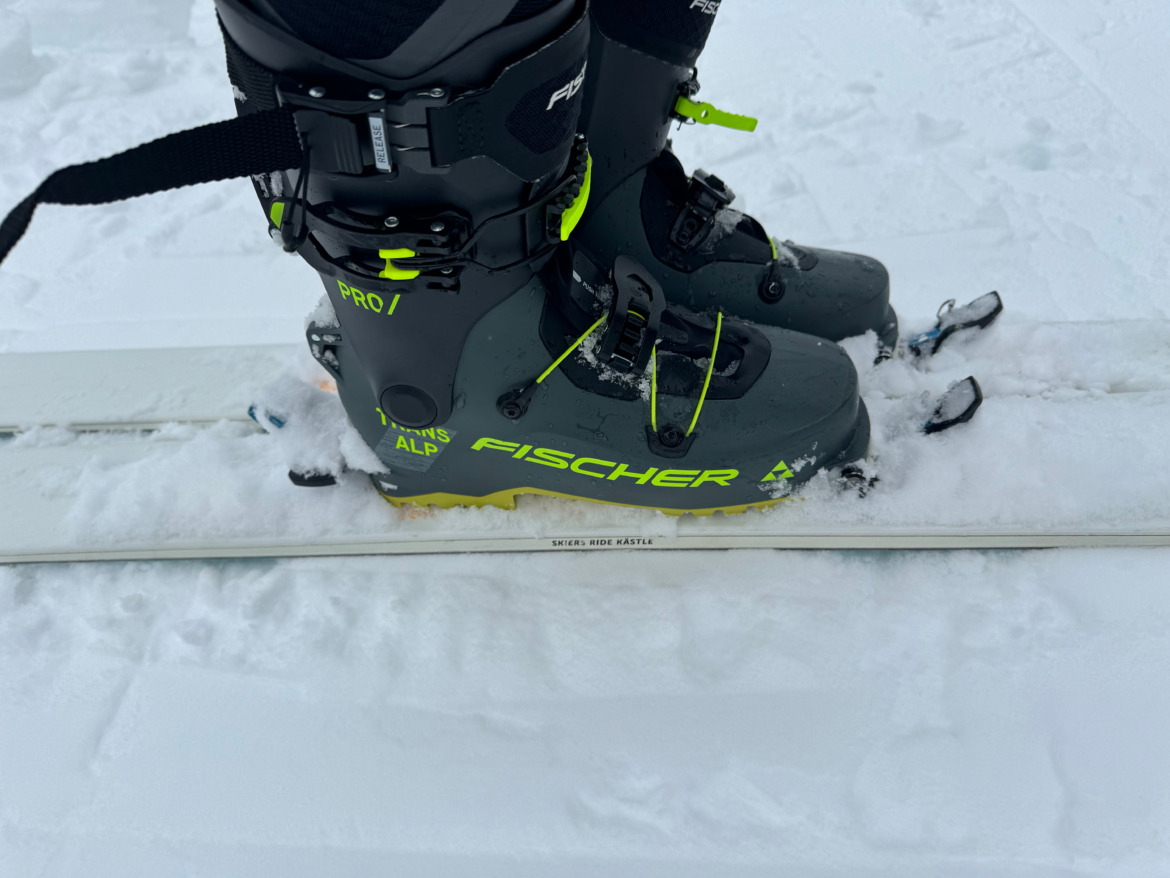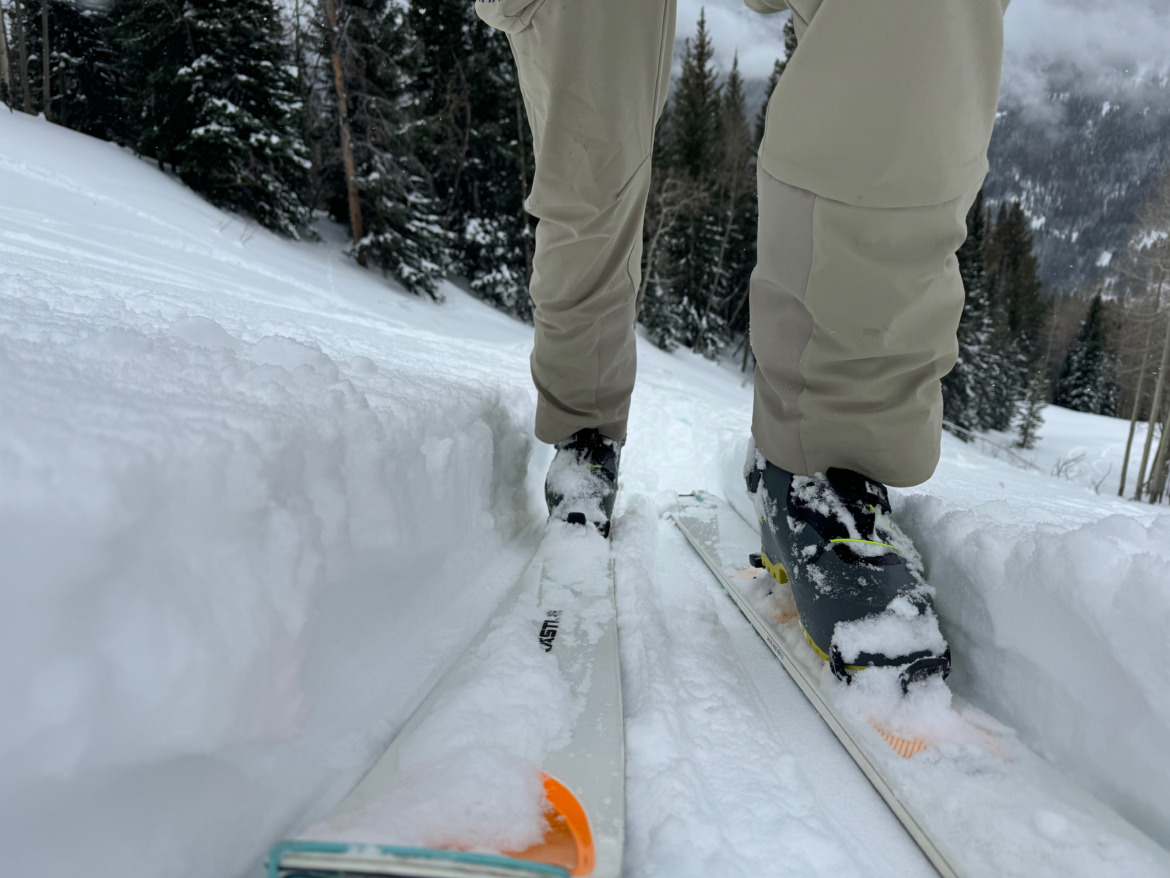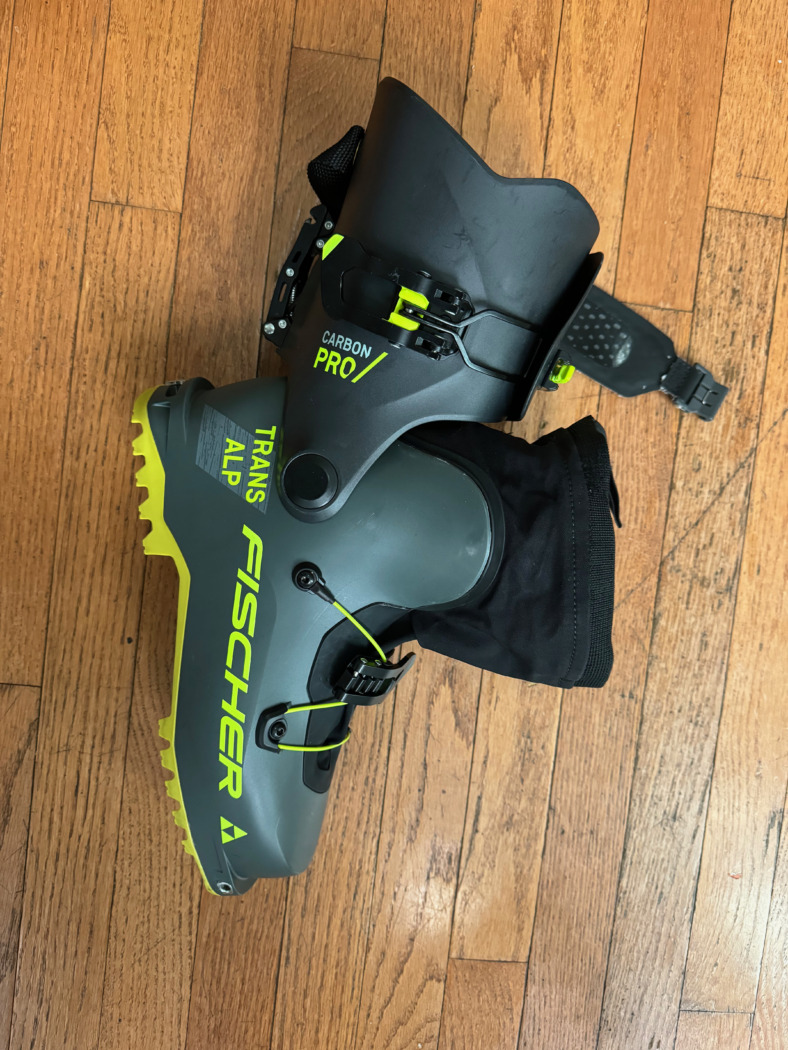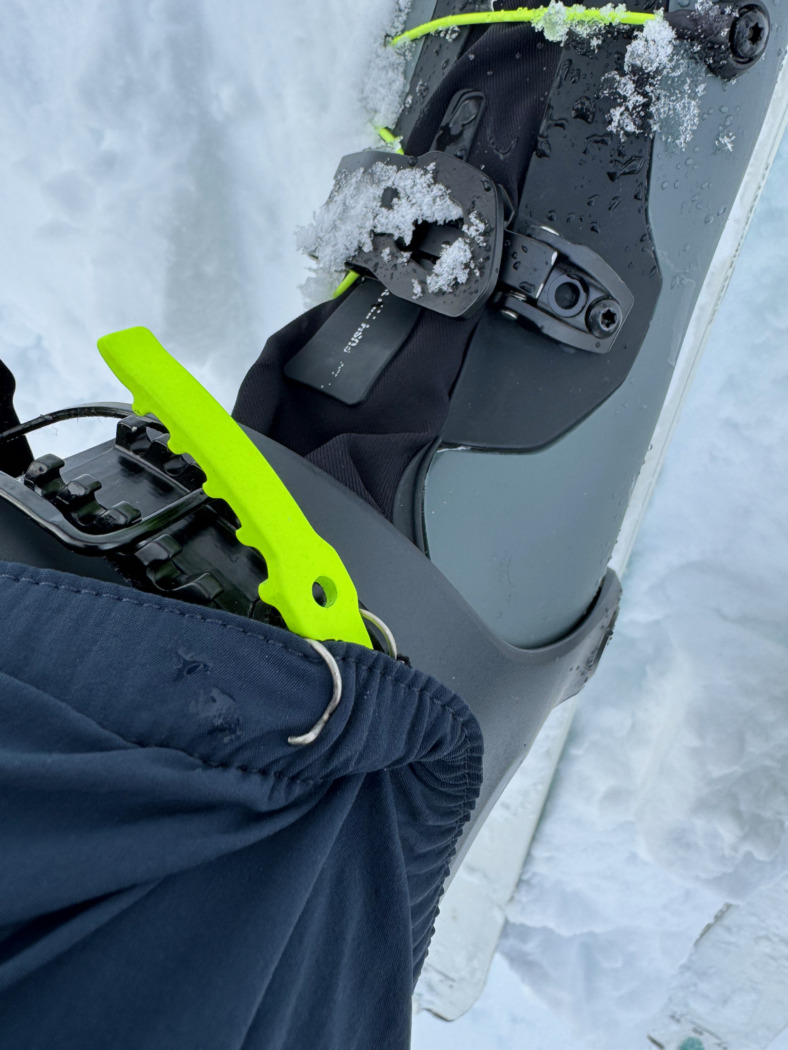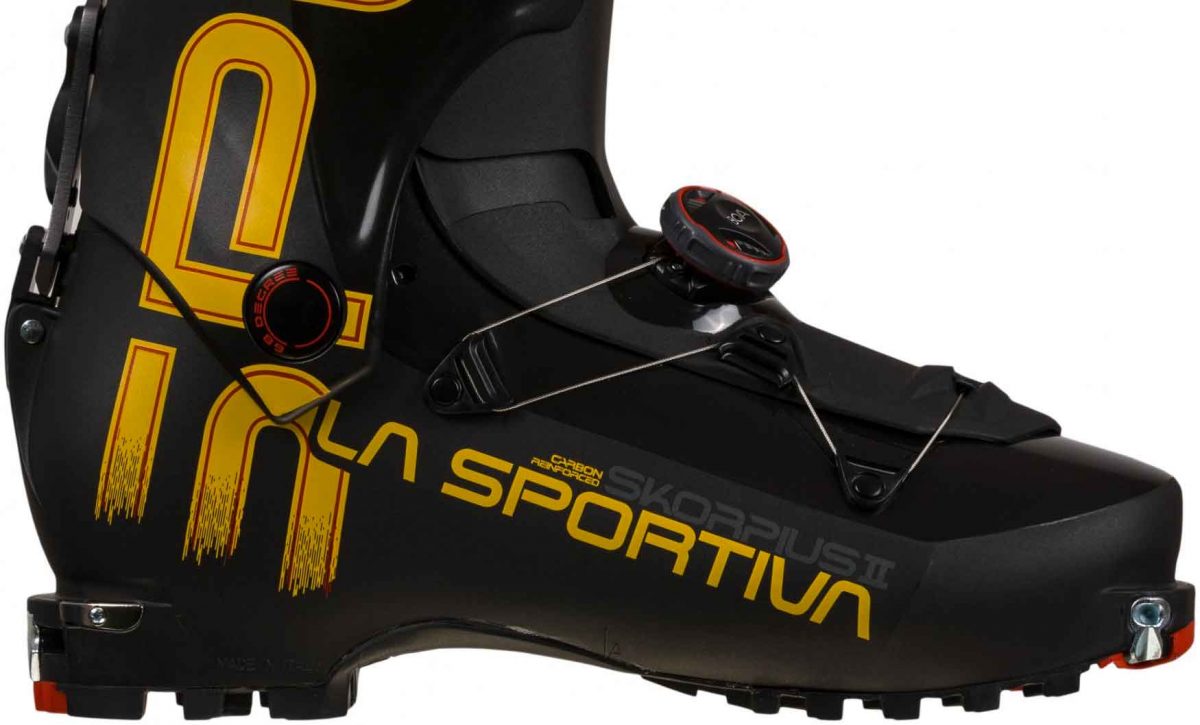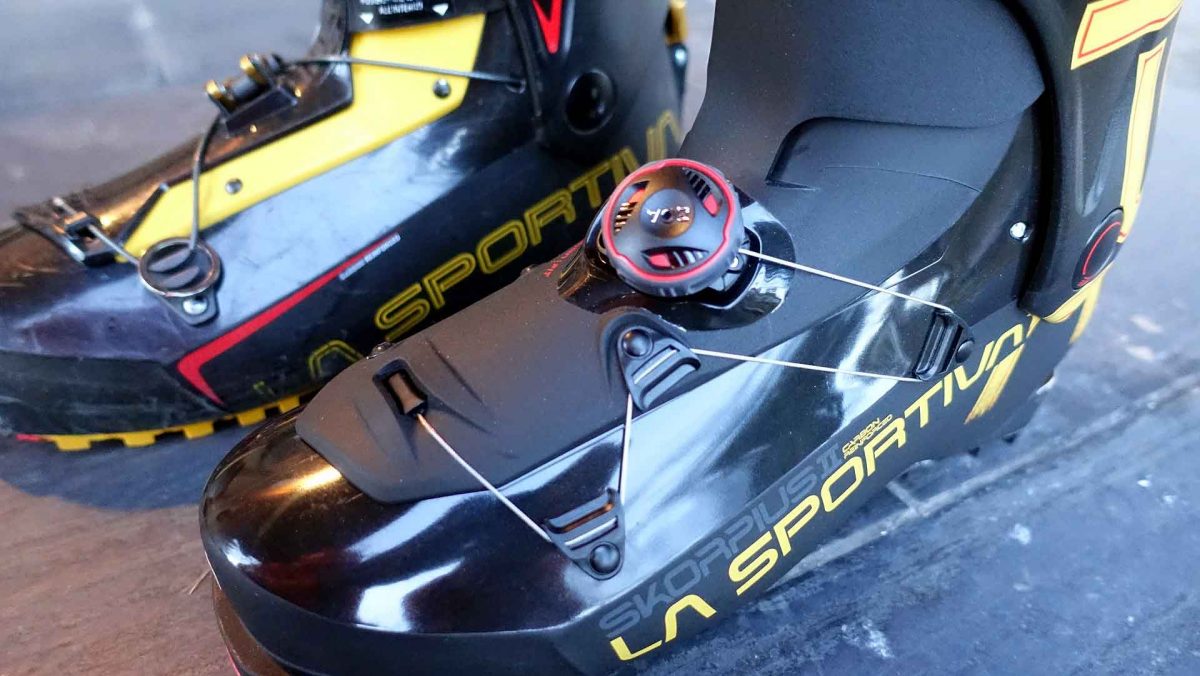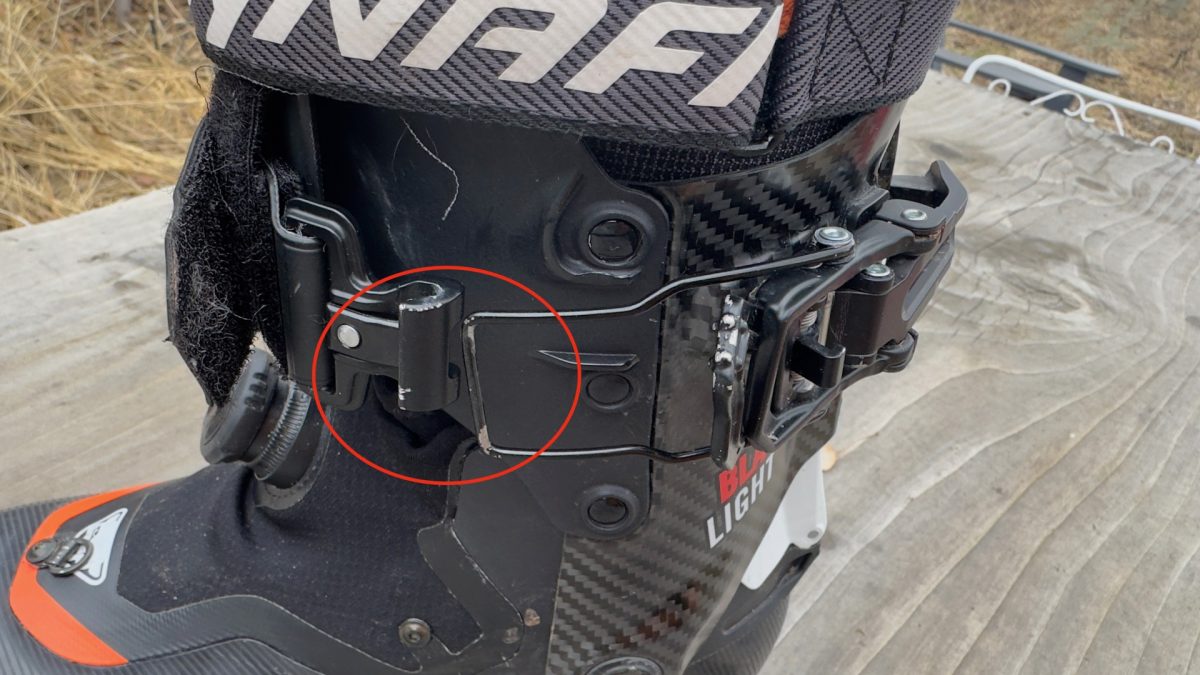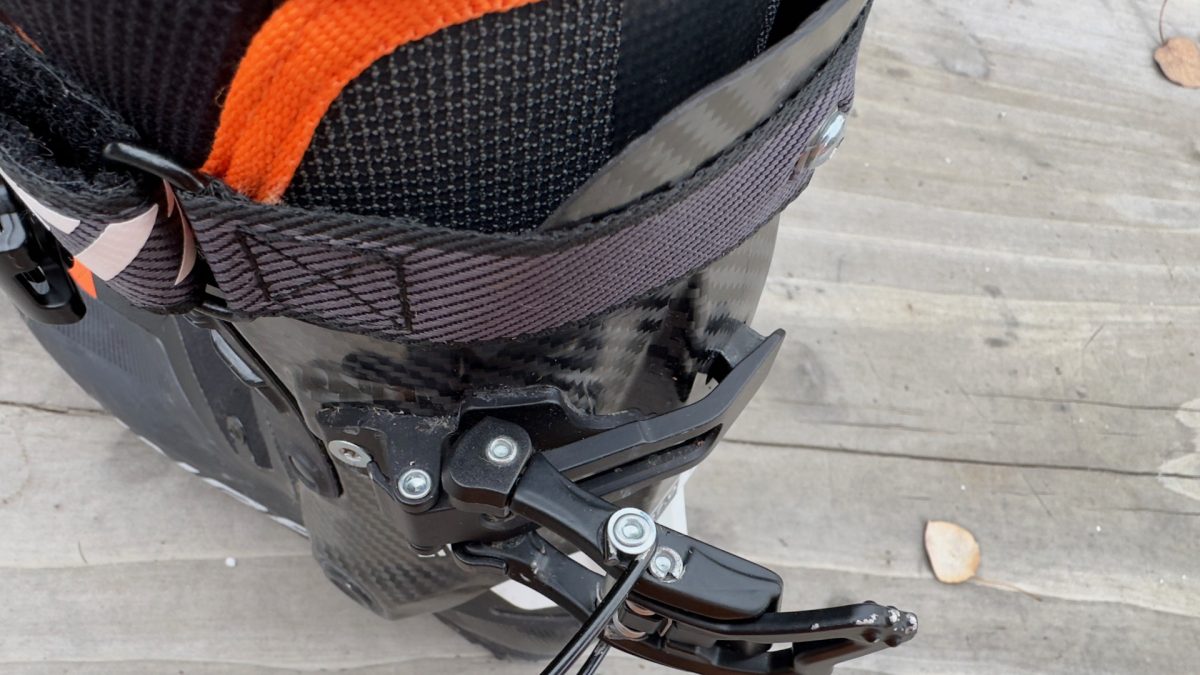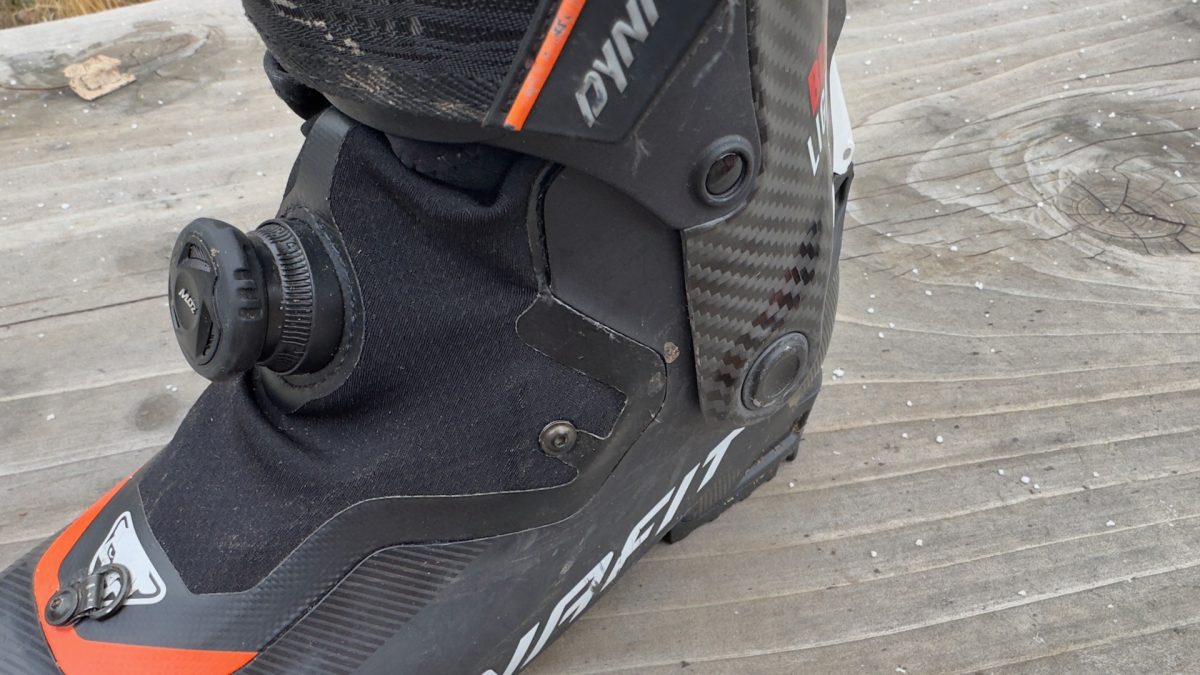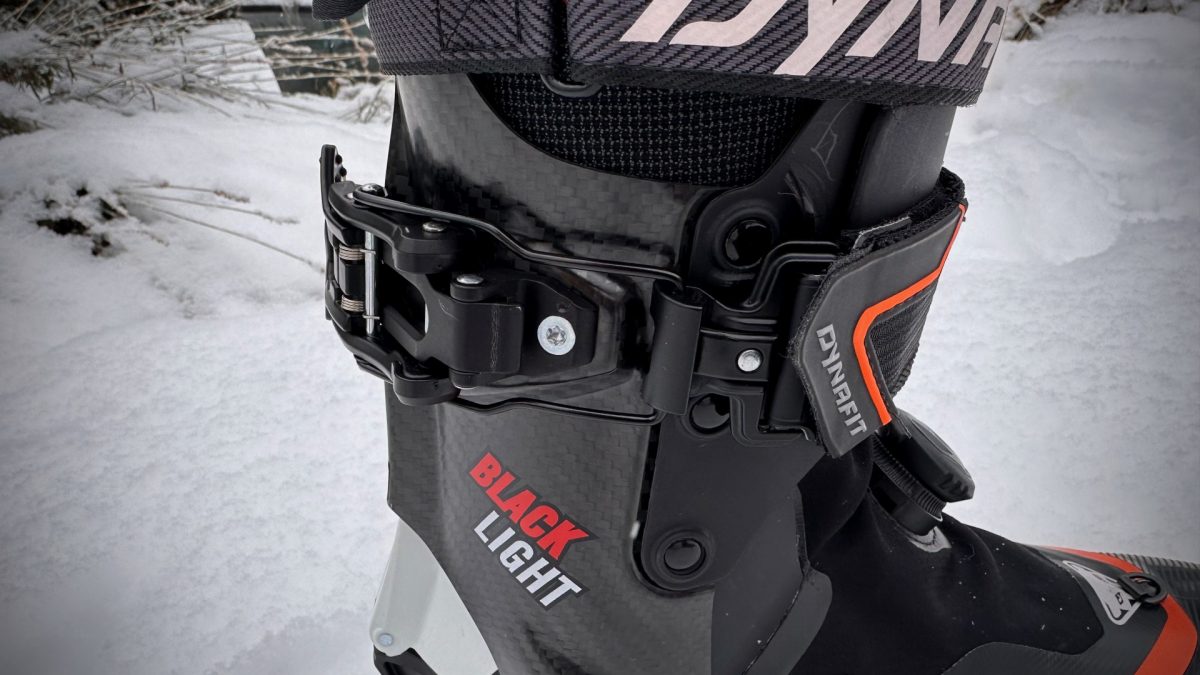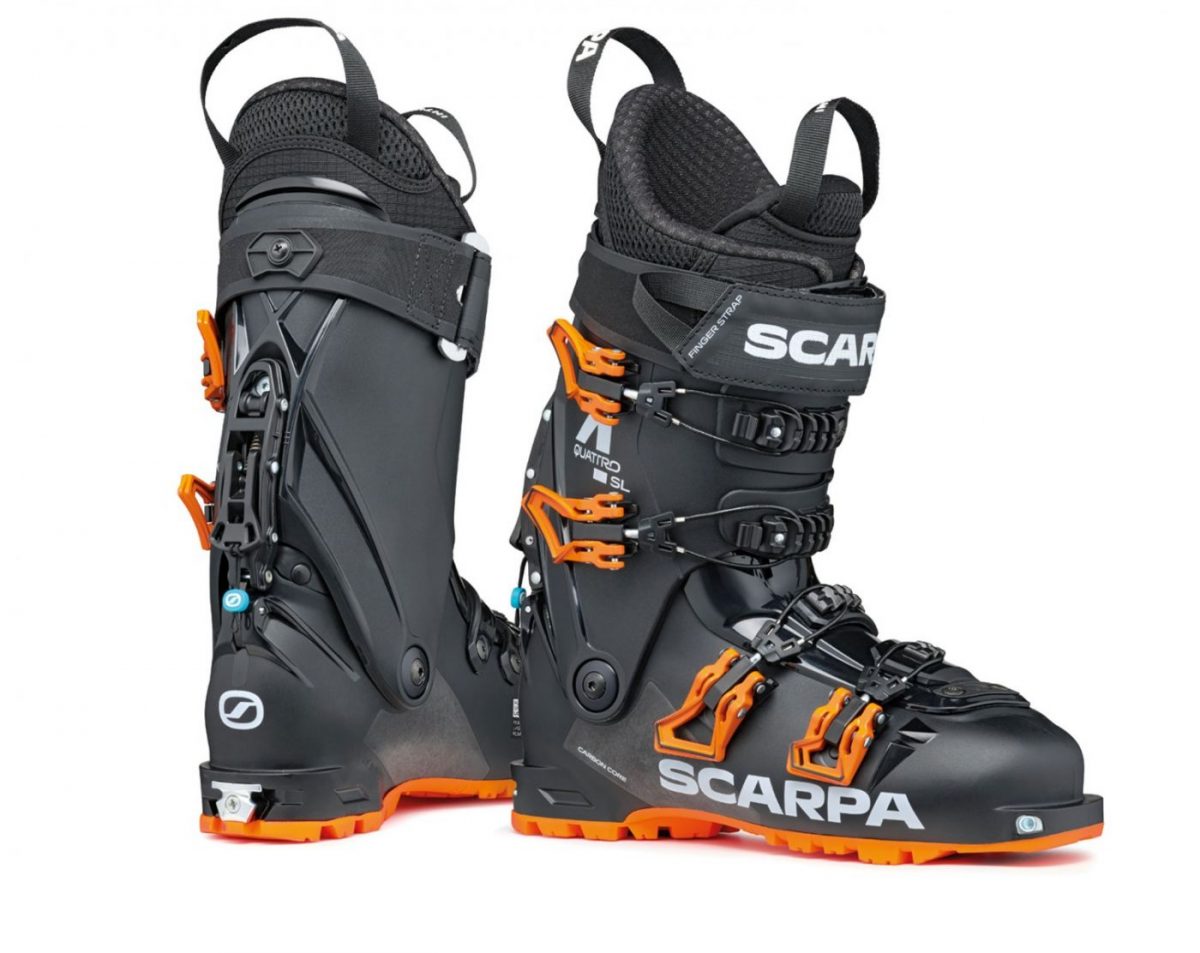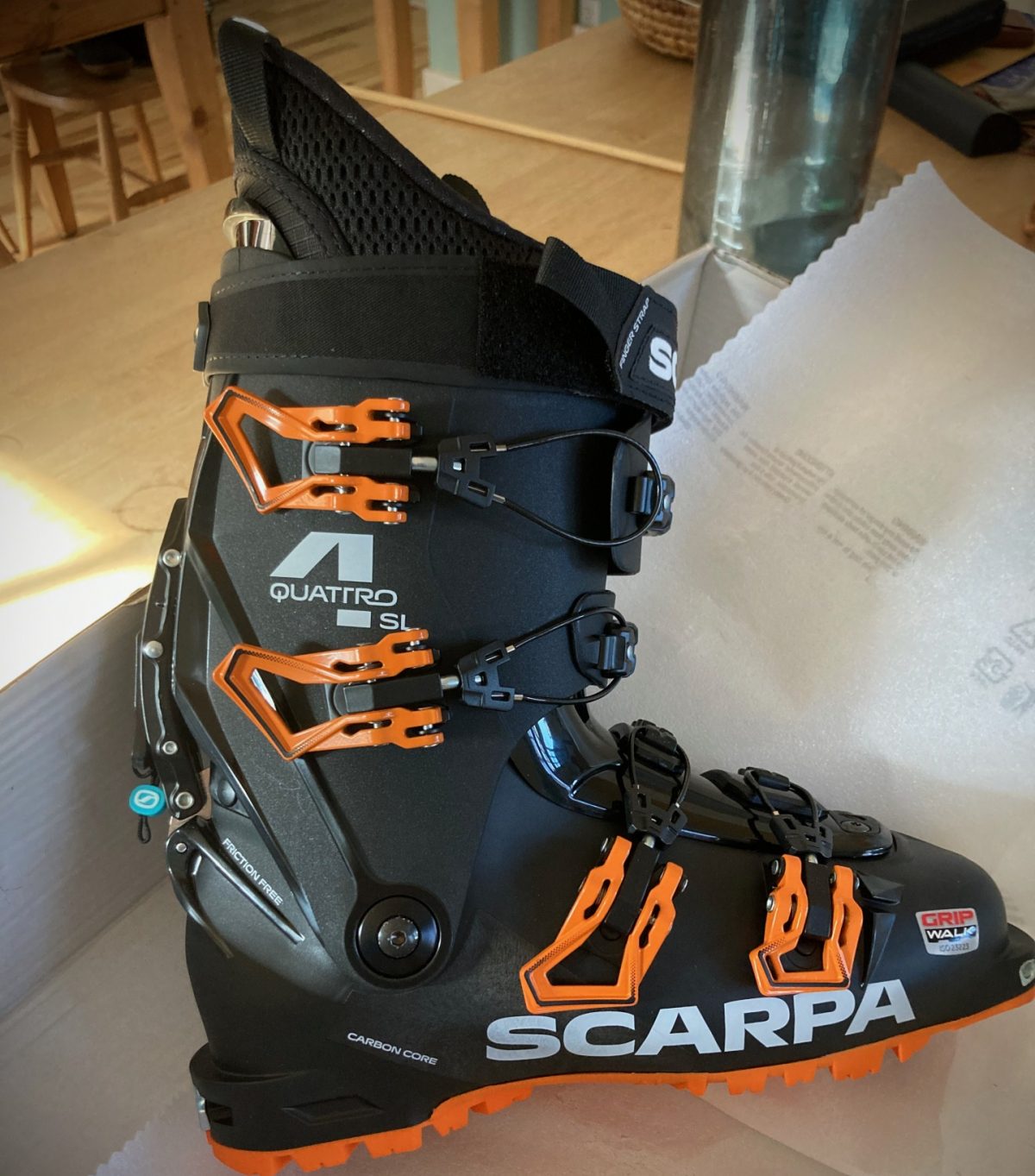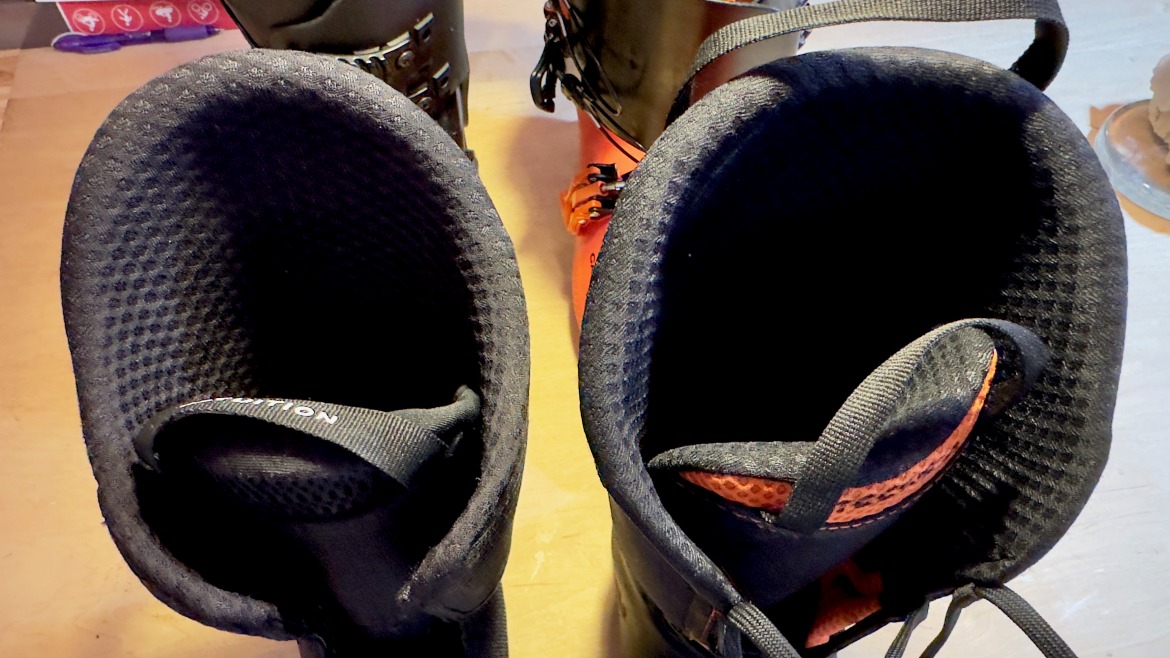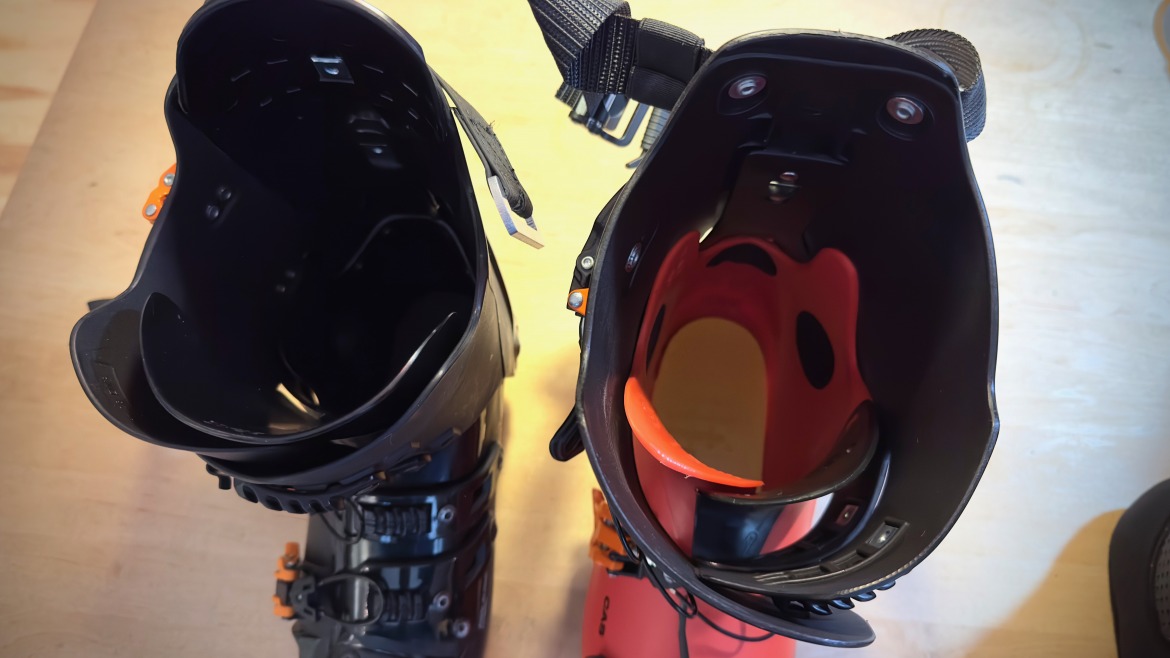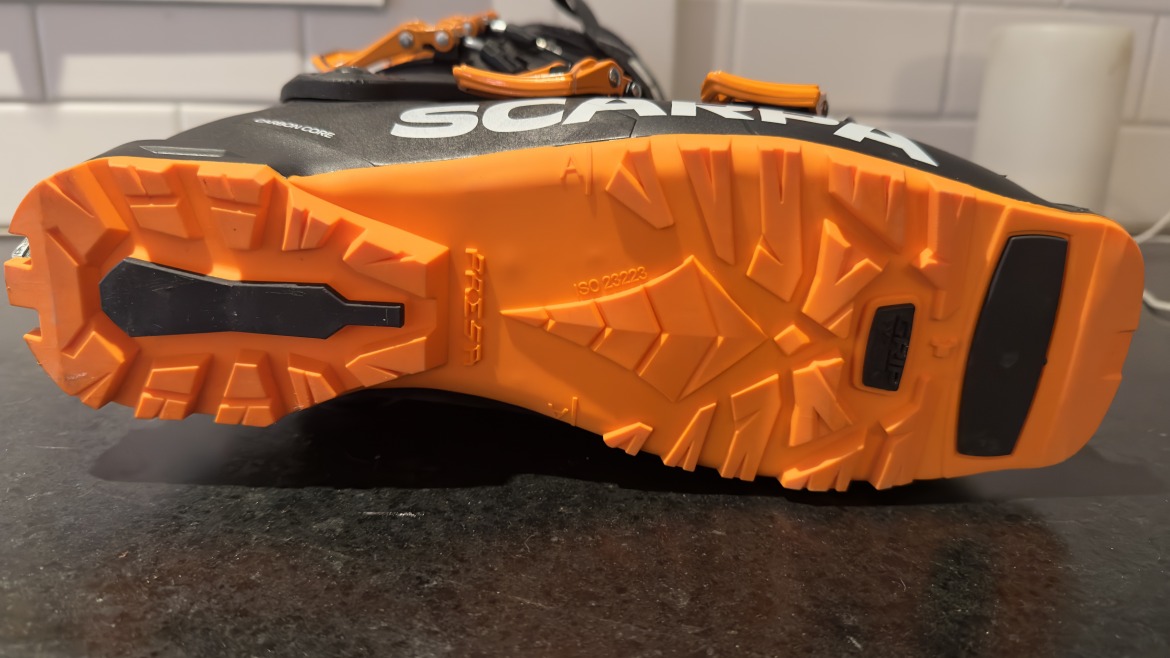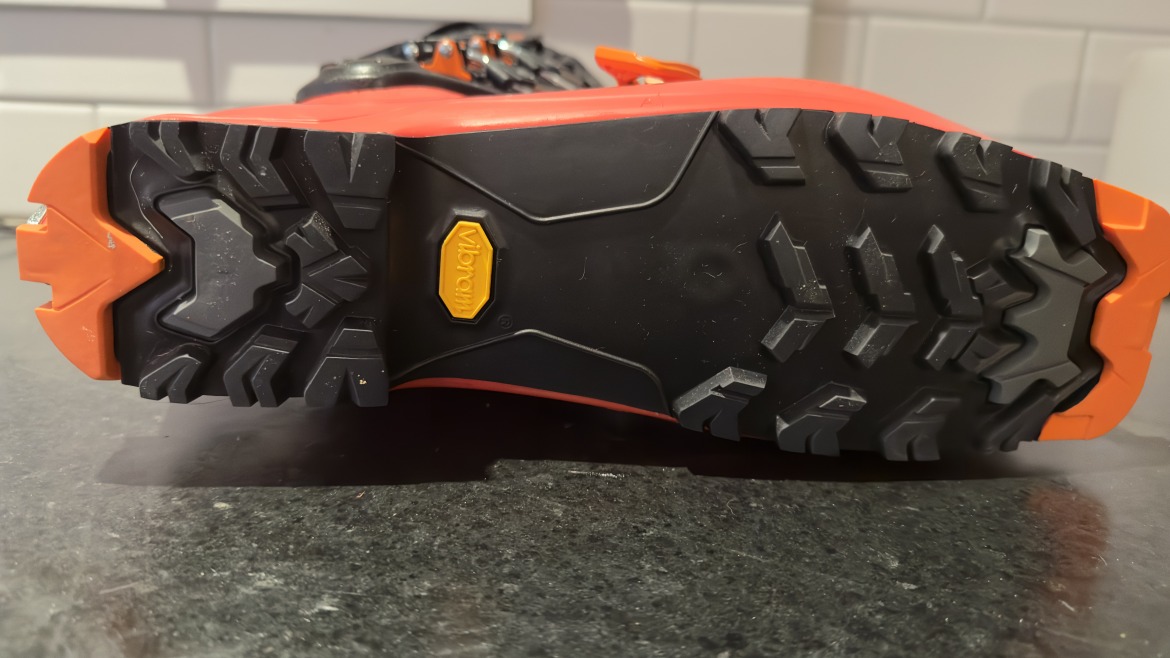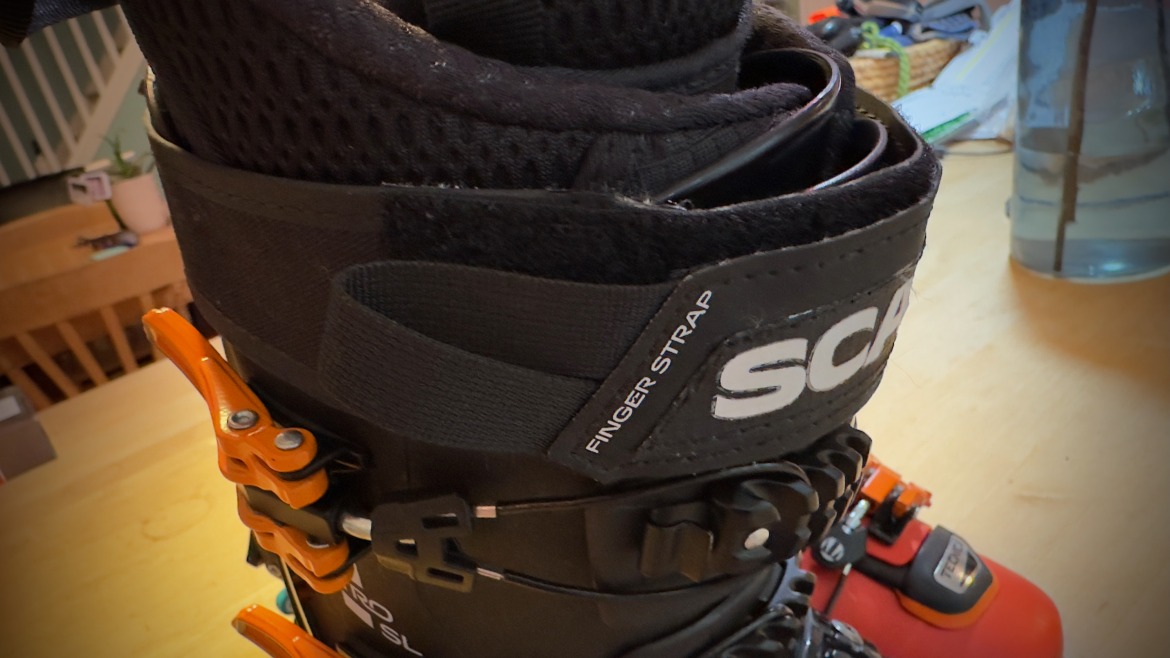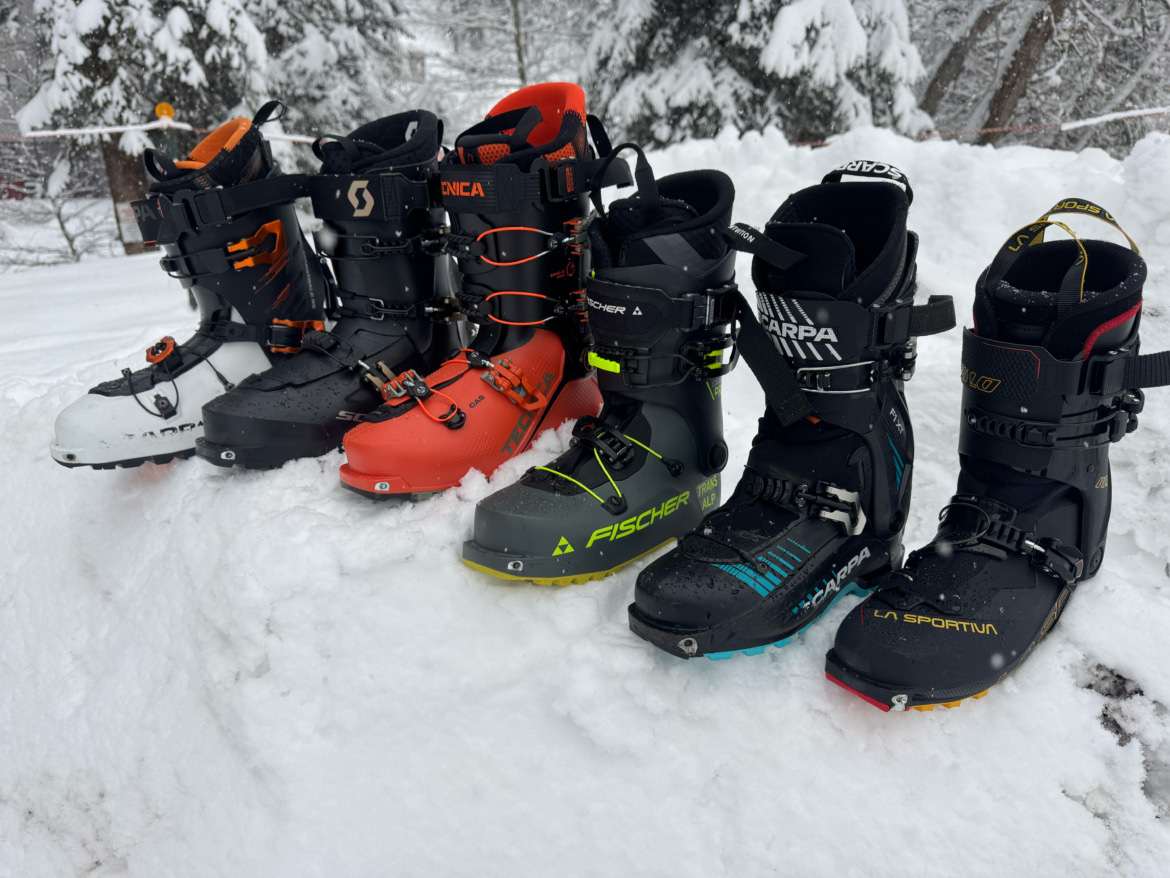
Just $50 at a garage sale with only two broken buckles, my first backcountry ski boots (Garmont Radiums) were transformative compared to the two-mondo-sizes-too-big tele boots I had been using. I sometimes couldn’t tell the difference between walk mode and ski mode, but that hardly mattered.
Man, have things changed. Ski touring boots are comparatively incredible nowadays, yet future us will surely look back at that statement and pity my naiveté.
Wildsnow testers have been stuffing our feet into every ski touring boot that we can get our dogs in over the past few years to put together a backcountry ski boot guide, which you’ll find below along with our favorites from all that testing.
Why Backcountry Ski Boots Matter
Is there a more important component of a ski touring kit than a good pair of backcountry ski boots? Or a piece of the kit puzzle that can ruin your day before it even starts? I say nay. Go too heavy duty and you’ll miss out on extra laps and be slower than your friends. Go too light and sun crusts and big skis will eat you. Wrong fit? Your feet might explode or they could be swimming. Bottom line, backcountry ski boots matter and it’s not the place to skimp.
How We Selected the Backcountry Ski Boots We Tested
There are a ton of backcountry ski boots on the market these days. Many good, some bad. But let me narrow it down because this is a human-powered skiing website. Wildsnow readers know that just because a ski boot has a walk mode and tech binding-compatible soles, doesn’t mean it’s a worthy ski touring boot. For that reason, we’ve excluded hybrid/crossover-style backcountry ski boots from this guide and focused on boots that were actually designed to go uphill for most of the day.
Of course, there’s the other end of the spectrum, which wears Lycra and drops us on the skin track. We didn’t include race boots in here for now, but we’ve raced [poorly] in the lightest boots on this list. The weights of the boots discussed here range from sub-1000 grams to almost 1600. Much more than that high end and you’re looking at some unserious contenders. Much less than the low end and you’re veering into specialized race territory.
Let me save you the suspicion – none of the companies in this guide paid to get on this list. Wildsnow may earn a small commission from link clicks. And I do mean small. The authors are not affiliated with, sponsored by, or compensated by any of these brands, though boots are typically provided free of charge for testing purposes.

The 1,429-gram Fischer Transalp Carbon Pros aren’t a chore to lug uphill.
What To Look For in Backcountry Ski Boots
Already know what you’re looking for? Skip this section and scroll down to check out the specific backcountry ski boots below.
Ask ten grizzled backcountry skiers what to look for in ski touring boots and you’ll probably get five different answers. Some of the key considerations when looking for a ski touring boot are: compatibility with the ski it will need to drive, fit, and range of motion.
Pairing Backcountry Ski Boots with Skis
The first question you need to ask yourself when shopping around for ski touring boots is which skis will this boot need to drive? Then ask yourself, how good of a skier am I, really?
If you’re driving big, heavy, full-length powder skis (2,000g+/ski) with a frame-style binding, let me stop you right there. You sure that’s what you want to haul up the skin track? If we can’t convince you otherwise, you’re going to need a beefy backcountry ski boot to drive it – something in the 1,500g+ realm with 3-4 buckles. But even if you’re pushing a big ski with a light binding, you’ll still need a boot with some muscle. Consider something like the Scarpa Maestrale RS or the Tecnica Zero G Pro (below).
Skis in the 95mm – 105mm underfoot are considered by many to be the sweet spot for touring rigs and it gives you options for boot pairings. The narrower and shorter the ski, the lighter the boot you can typically get away with. Or mix and match – go a little shorter than normal to get away with a wider ski and lighter boot pairing. Boots in the 1,200g – 1,500g range can work for most skiers in this group. Check out the light-but-powerful La Sportiva Skorpius CR II and the Fischer Transalp Carbon Pro (below).
Skinny skis (<95mm underfoot) can be blissfully light, and so too are the backcountry ski boots built to drive them. Maximize high range of motion and lightness in your boot pick, both of which you’ll find in the La Sportiva Kilo and the Scarpa F1 XT (Below).
Got multiple backcountry ski setups? A 2-boot quiver is the way to go. But if you need one boot to do it all, make sure it has enough heft and support to drive the bigger ski, knowing you’ll probably need to sacrifice something in the weight and/or range of motion departments. Again, the La Sportiva Skorpius CR II or the Fischer Transalp Carbon Pro could fit the bill.
Looping back to the comment, “How good of a skier am I, really?”, this matters because ultralight backcountry ski boots can be more difficult to ski for beginners and some intermediates. They’re not as supportive as beefier boots, can demand better technique, and don’t provide as much room for error as heavier-duty boots with more predictable flex patterns.
![Sam pictured here with her masterpieces: handcrafted footbeds, heat molded liners, and her big [behind the mask] smile.](https://wildsnow.com/wp-content/uploads/2020/09/bootfit2.jpeg)
Bootfitter pictured here with her masterpieces: handcrafted footbeds, heat molded liners, and her big [behind the mask] smile.
Fit for Backcountry Ski Boots
Your foot will decide if a backcountry ski boot will work for you whether you like it or not. It’s why one of our testers stares longingly at his Fischer Transalp Carbon pros but barely skis them. Check the boot’s last width, which is one indicator of how they might fit. 100mm is the unofficial middle of the road in terms of width. The 103.5 width Scott Cosmo Pro’s (below) are on the wider side of the spectrum.
All backcountry ski boots, like alpine boots, use Mondo sizing, an (ideally) objective measure of a boot’s inner length. Each shell size covers two sizes, depending on how the manufacturer breaks shells. Scarpas break on the full size, where a 27.5 and a 28 are in the same shell. Dynafit and La Sportiva (and most others) break on the half size, where a 27 and 27.5 are in the same shell. A dirty little industry secret? There’s usually no difference between liners in the same shell (i.e. 27 and 27.5 in a La Sportiva Skorpius CR II are the same).
Fitting boots can be complicated. If you’re not a seasoned bootfitter, we can’t recommend enough going to your local bootfitter, like Cripple Creek Backcountry, for expert advice. Even if you are a seasoned bootfitter, your local shop will have an intimate knowledge of all the new boots and fits on the market. We didn’t dive too deep on the fit of each boot in this guide since that’s a big topic for an abbreviated overview like this. Hit us up in the comments if you want more details on one of the models below.
Range Of Motion (ROM)
Ski-touring fanatics debate ROM’s constantly. And that’s a sign of an annoying reality – a boot’s stated Range of Motion isn’t always so, especially when you jam a foot in there. Other than weight, range of motion is what really separates bad, good, and great ski touring boots.
Ultralight boots like the Scarpa F1 XT are basically only limited by your ankle. Cuffs on beefier boots, like the Tecnica Zero G Pro, have a shallower range of motion fore and aft. More substantial liners add some friction to the equation, too. If moving far, fast, and light is your goal, range of motion over 65° will make a big difference.
The Best Ski Touring Boots of 2024
(Ordered by weight, lightest to heaviest)
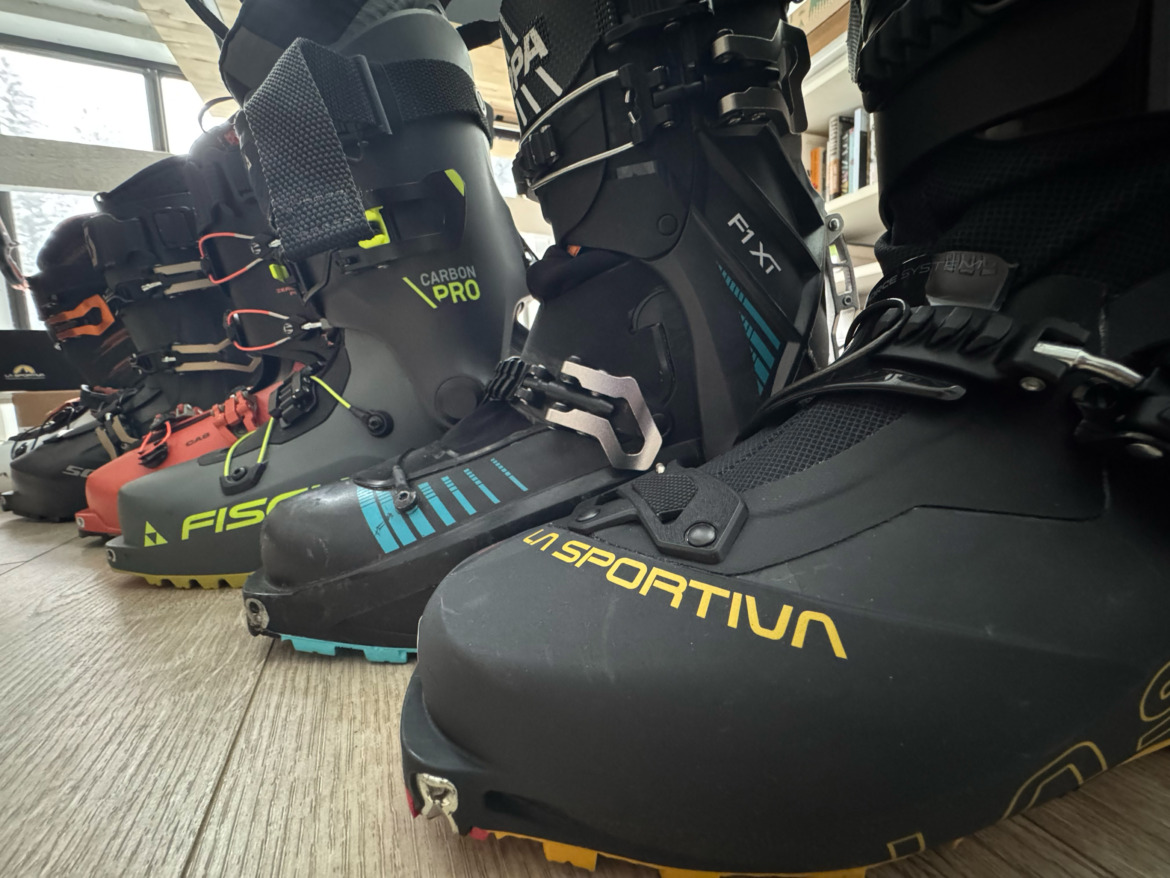
La Sportiva Kilo
- Weight: 1,141g (27)
- Claimed Range of Motion: 70°
- Forward Lean: 12° or 14°
- Material: Grilamid Bio Based LF Carbon
- Flex Index: 110
- Last: 100.5
- Price: $799
La Sportiva is really dang good at doing a lot with a little. The new Kilo is a very light boot that skis like something heftier. How hefty? It was plenty of boot to drive my 184 4FRNT Nevars, for example.
The Kilo’s are not just a buckled version of the Skorpius CR II. They land somewhere between La Sportiva’s race boots and the Skorpius on most counts. Both shell and cuff are made from Grilamid Bio Based LF Carbon, which La Sportiva claim gives them a 110 flex rating, curiously higher than the beefier feeling Skorpius CR II’s 100. What I will say is that the flex is really interesting. They feel stiff and supportive enough for light boots, but they’re also bursting with energy and liveliness like they’re spring loaded. It’s not something I’ve felt in a lightweight touring boot before. I like it.
They’ve also done an admirable job of not folding for such little boots. Yes, that’s a low bar. I’ve been doing my best to fold them on big skis, which I could do with a lot of effort on the resort. But I haven’t gone knee-to-ski in the backcountry. They’re solid such featherweights.
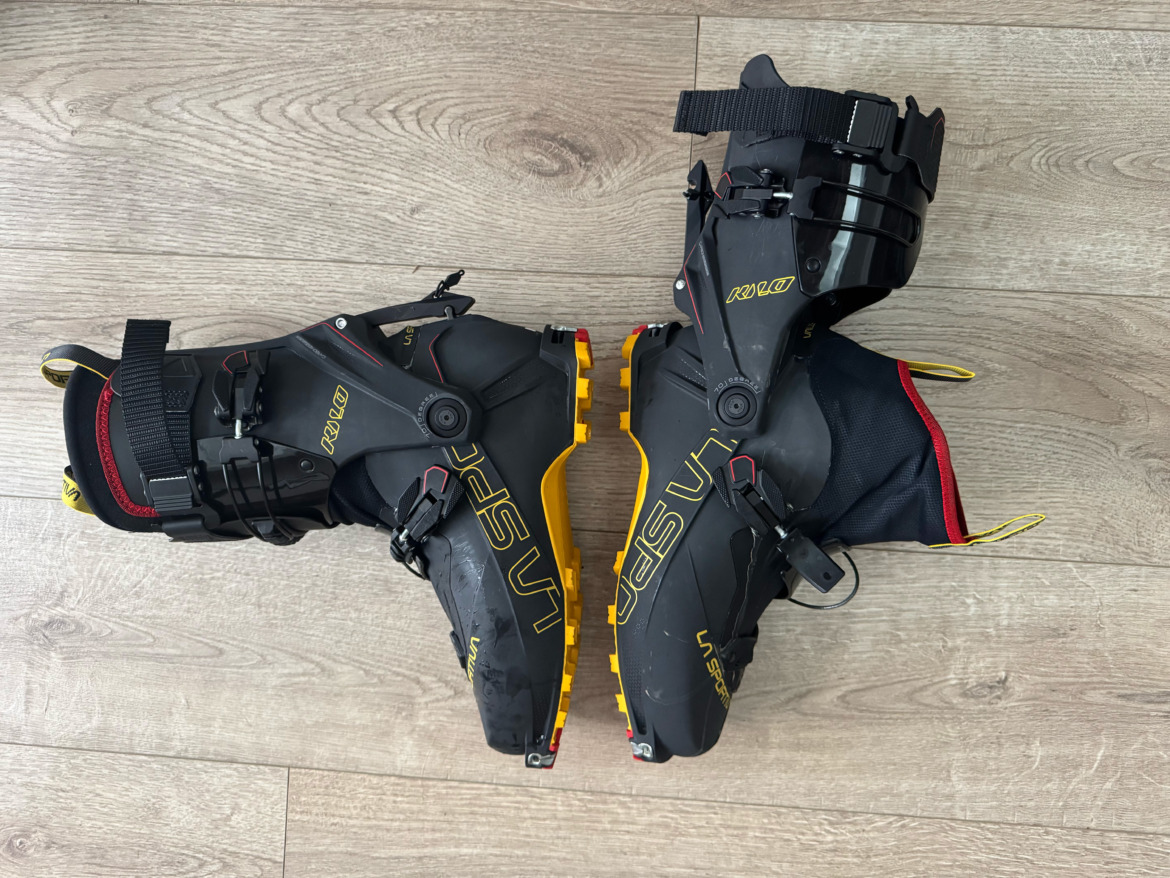
There’s a lot to like in the details. The lean lock levers are highly refined and offer two forward lean options. The buckles are all adjustable and easily replaceable with bolts instead of rivets. The mini gaiter in lieu of a tongue is robust. The FORCE equalizing z-cable lower buckle does a good job of dispersing tension. Their heel hold is impressive.
There’s an elephant in the Dolomites – The Scarpa F1 XT and La Sportiva Kilo look really, really similar. Two buckles each, no tongues, camming power straps, mini gaiters, massive range of motion, and very light weights. Which one is better? I’m currently skiing them head to head and that will be a later story.
For now what I will say is that the Kilo’s offer better heel hold and narrower, lower volume fit than the F1’s. That has a big impact on how they ski at baseline. It’s a close call, but the Kilo’s feel slightly more energetic and progressive than the F1 XT’s, though the flex is a little bit softer off the top. I’ve been able to push bigger skis around with the Kilo’s, too, but that’s mainly because they fit my feet a little bit better, especially in the heel and instep. But the F1 XT’s have the edge in torsional stiffness without a doubt. That matters when edges matter – so hardpack and ice.
Bottom line, I have yet to find a major flaw in the La Sportiva Kilo. They’re low volume lightweight rippers that can match with a bigger-than-expected spectrum of skis. They’re the lightweight boots I’m most excited about for winter 24/25 and it sounds like there’s a beefier version landing in the US next fall that I’m eager to get my mittens on. Stay tuned for a more thorough review.

Scarpa F1 XT
- Weight: 1,145g (27)
- Claimed Range of Motion: 72°
- Forward Lean: 11°/13°/15° +/- 2° with spoiler
- Material: Carbon Grilamid cuff, Grilamid fiberglass shell
- Flex Index: 95
- Last: 100
- Price: $899
Hot take: dropping the BOA and the Velcro strap was the best thing that could have happened to the Scarpa F1. The F1 XT is a lightweight (1,275g in 28), low profile, two-buckle boot aimed at the light-and-fast crowd pushing lighter weight medium to small skis (>95mm underfoot).
Other than the buckles, the F1 XT diverges from the lighter-and-stiffer F1 LT with softer Grilamid Fiberglass shells, but retains the stiffness in the cuff with Carbon Grilamid. It also sports a lightweight non-elastic Booster-style camming power strap that does wonders for fit and eliminates dead space at the shin. That gives it a friendly, yet relatively progressive character and state 95 flex, which despite being somewhat arbitrary, felt reasonable. I was able to fold them with bigger skis in hard conditions without too much difficulty. But they were supportive enough in soft snow with lighter skis. I found them precise enough for steep skiing and icy couloirs, and I think Vivian Bruchez would agree judging by his Instagram.
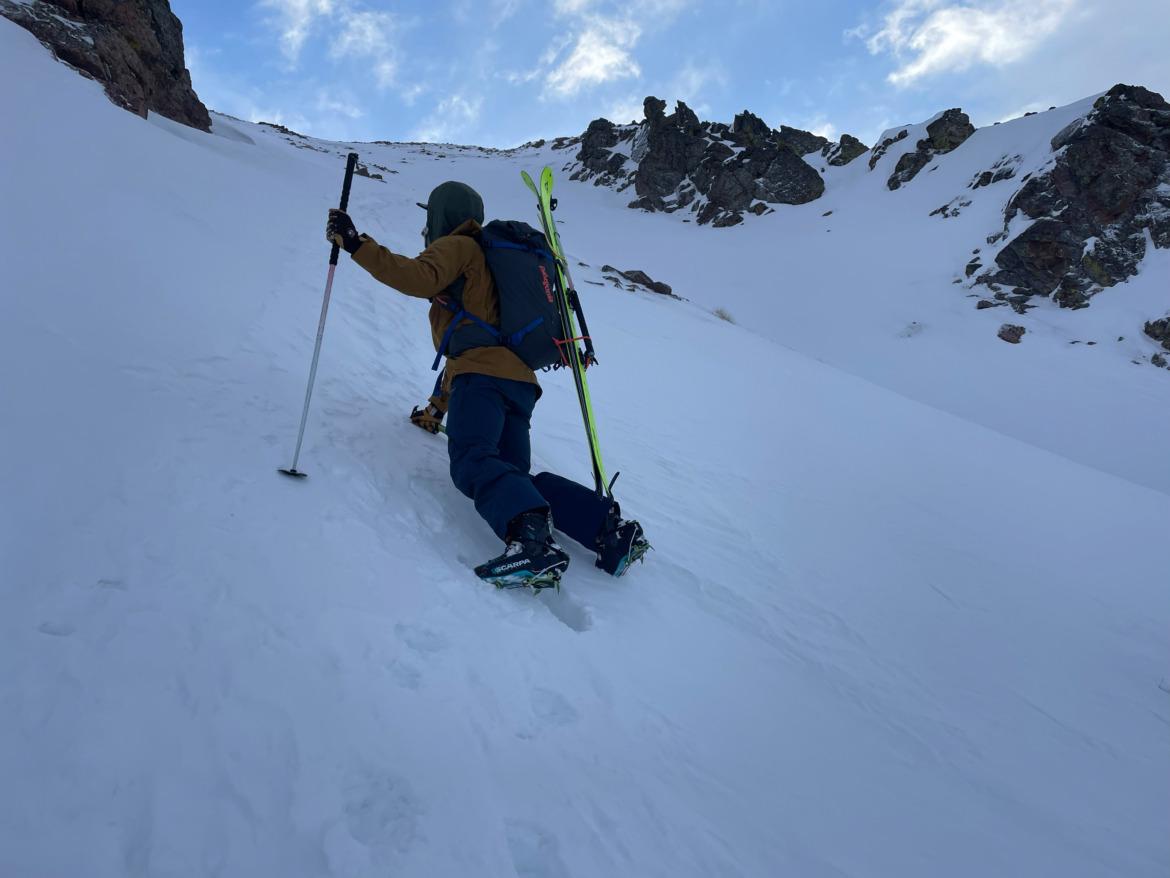
Credit: Michael Hand
The skintrack is where the F1 XTs are matched only by the La Sportiva Kilo. The range of motion is massive, a claimed 72 degrees, and it’s nearly frictionless thanks to the minimalist Intuition liner. And you don’t even need to open the top buckle and power strap to unlock the vast majority of it.
Who is the F1 XT for? This could be a 1-boot quiver for skiers exclusively pushing the lighter, shorter, narrower end of the ski spectrum, and you’d know if this was you. But a bigger proportion of skiers will be better suited to adding the Scarpa F1 XT to the lighter spot in a 2-boot quiver for big days in the backcountry where range of motion and lighter weight matter the most.

La Sportiva Skorpius CR II
- Weight: 1,195g (27)
- Claimed Range of Motion: 68°
- Forward Lean:
- Material: Pebax® Bio Based Rnew® 1100 w/ 30% Carbon Reinforcement cuff, Pebax® Bio Based Rnew® 1100 w/ 10% Carbon Reinforcement shell
- Flex Index: 100
- Last: 102.5
- Price: $849
You won’t see a lot of BOA/Velcro tightened backcountry ski boots on this list so you know where I stand. The La Sportiva Skorpius CR II is here, despite the BOA and Velcro, because you get a lot of boot and capability for just 1,195g in size 27.5.
Those Italian boot tinkerers put those grams to work. The Skorpius CR IIs feel downright beefy on the downhill thanks to a confidence inspiring cuff and a plush-for-this-class moldable liner. It flexes like it means business too at a marketed 100 flex thanks to Pebax bio-based Rnew with 30% carbon infusion in the cuff, 10% in the shell.
Touring range of motion is great, too, as you’d expect from this weight class. A well-broken-in pair is only limited by your ankle, and the articulation is low friction. The swing lock mechanism is unique – the ski/walk lever spins like the hands of a clock rather than vertically like most other boots. It takes some getting used to, but it’s effective.
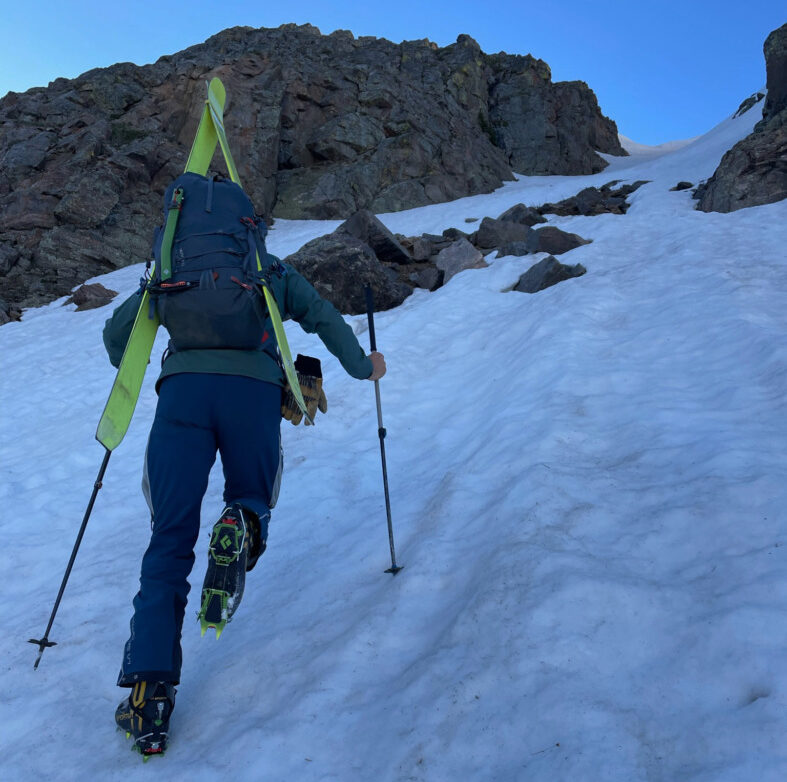
Why does the La Sportiva Skorpius CR II get a special shoutout here despite being a few years old? Because it’s one of the only boots in the ~1.2kg weight class that can push full-sized sticks over about 100mm underfoot. 189cm Kastle TX 103’s and the wide side of DPS’s very light Carbon Pagoda Tours are in play, for example, in the right conditions.
Skiers with wide feet and high arches rejoice – the Skorpius CR II’s 102.5mm last is accommodating, cozy, and easy to get into. Skiers with really low volume and/or narrow feet, try these on first.
Read more about the La Sportiva Skorpius CR II on Wildsnow here.
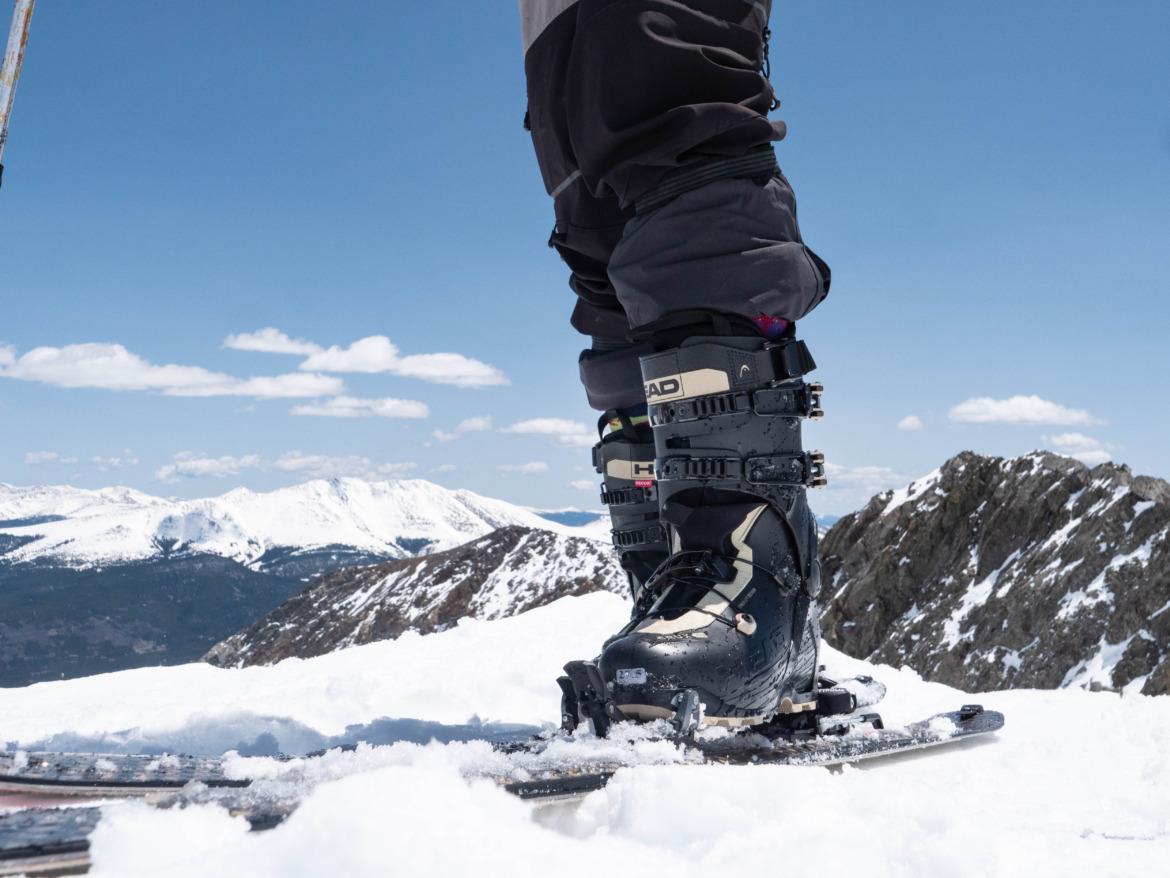
Head Crux Pro
- Weight: 1,354g (27.5, measured as avg. of both boots)
- Claimed Range of Motion: 65°
- Forward Lean: 13.5° +/- 2°
- Material: Pebax Rnew+Recycled Carbon Fibers
- Flex Index: 130
- Last: 99
- Price: $849
{Review from WS Editor Justin Park}
Head/Tyrolia took their time getting in on the backcountry hardgoods bonanza but have done it right with a well-thought-out “capsule collection” that includes three touring boots, a mid-fat 105mm touring ski, a Tyrolia touring binding, and touring pack. I’ve been testing the Head Crux Pro Boots since midwinter 2023-24 season and they’re a worthy contender for the right skier.
When I first saw the build with an open cabrio-style construction and fabric tongue covering like a 1000-gram skimo boot claiming a 130 flex, I rolled my eyes and thought, “Yeah, right.” I was wrong. The Crux Pro are really stiff both forward-flexing and laterally thanks to a unique skeleton surrounding the Pebax cuff and a rock-solid walk-mode lock-out. They also have a tall cuff on par with alpine boots which is a relief for someone like me who hasn’t spent much time in cute lil’ skimo ankle booties and would instantly fold them and myself.
The 1,354-gram weight is ultralight for a downhill-oriented boot, but heavier for a skimo slipper, so it hits an interesting niche for folks that aren’t ready to sacrifice power on the down but understand what distance and speed possibilities open up when your ski/boot combo drops below 3000 grams. Even though they’re much different boots, I’d say the Crux Pro’s closest competitor is the Tecnica Zero G Tour Pro (next review) which is a narrow, four-buckle ultralight charger that’s a much different boot but similar weight and use-case.
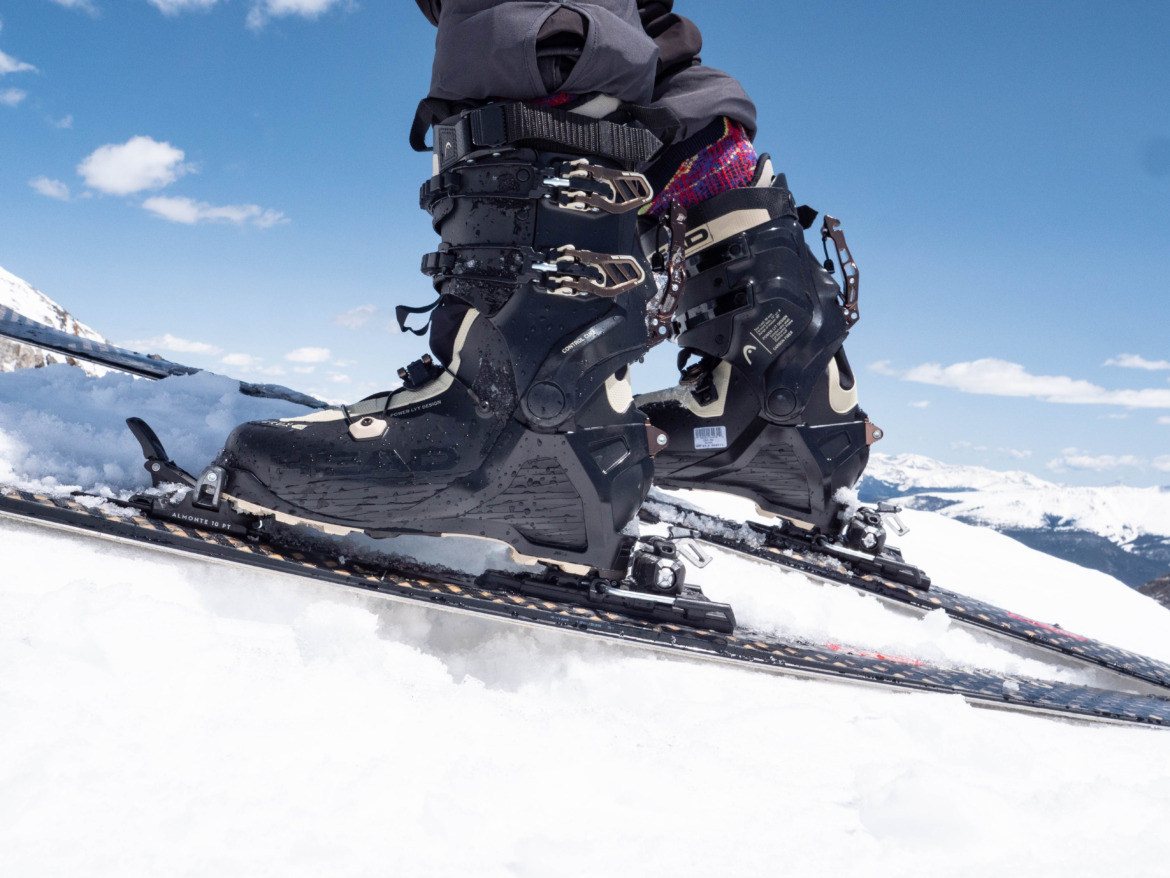
Where the Zero G Tour Pro leans more downhill performance, the Crux Pro has a better uphill experience with faster buckle transitions and a smoother, more natural walk mode. Both boots have a similar niche, but I think the Crux Pro will appeal to skimo types looking to move into something burlier for more aggressive descents while the ZGTP will be a more natural transition for freeride touring (I think Euros call it freetouring?) types who want a lighter boot to go further in.
I’ve seen other ski pubs call the Head Crux Pro boots “Best for Low-Volume Feet” and while they do have a narrow last (Head’s website states 97mm but I’d call it a 99), this is not a low-volume boot overall. The substantial “head room” above my fairly flat foot was immediately noticeable and while it was comfy on the uphill, my foot jarred around dangerously in the ultra-stiff shell on the down until I added my custom footbed to chew up volume and provide arch support.
I love how fast the buckles are on transitions I was able to keep them locked open for ascending in the same position I used for descending which simplifies operations, especially if you have multiple transitions in an outing. The single foot buckle connects to a Z cable and is your only means of compressing over the foot. It works well enough but it can be hard to get on the tightest position since the buckle isn’t attached to the boot, just the cable, and requires some finesse if you want to really clamp down. I also wish they had built in a way to cinch the fit at the ankle crease where I most noticed the extra volume and looser fit. Perhaps having that single buckle closer to the ankle joint rather than over the foot would help, as in the Scarpa F1 XT and La Sportiva Kilo (both reviewed above).
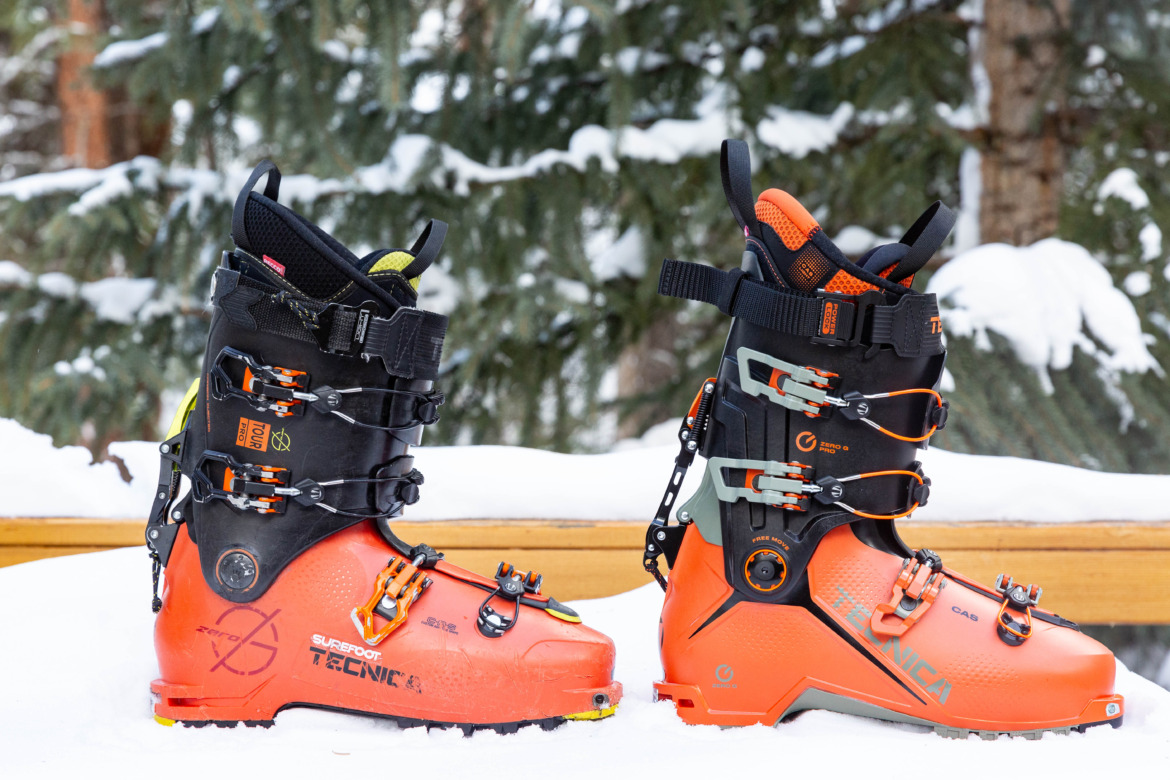
Tecnica Zero G Tour Pro versions 1.0 and 2.0 (right)
Tecnica Zero G Pro
- Weight: 1,369g (27.5)
- Claimed Range of Motion:
- Forward Lean: 14/16° adjustable
- Material: Grilamid
- Flex Index: 130
- Last: 99 mm
- Price: $899.95
{Review from WS Editor Justin Park}
When Tecnica debuted the Zero G line in 2016, many skiers were frothing. This writer included. Until then, it seemed like you had to choose between light skimo boots that would crumple if skied too hard and overbuilt four-buckle options that held you back on longer spring missions. I’ve skied through two aftermarket liners in the original Zero G Tour Pro which gave ~130 flex at just over 1300 grams per boot—they nailed the balance of light weight and stiffness to drive skis aggressively.
Over the past 6+ seasons in the v1.0 Zero G Tour Pros, I met lots of guides, pros, and everyday chargers in them as well. I also met lots of folks who liked the stats on the boot but couldn’t get the fit right. Part of what attracted me to it—narrow last, low-volume interior—kept other folks away. In particular, the boot pinched at the base of the toes where the foot is generally widest and I ended up DIY punching out around the pinkie toe base as I’m sure many others did. Many modded their Zero Gs by tipping the upright forward lean with an aftermarket solution from Raide and the wise ones tossed the thin included liner in the trash.
The new Zero G Tour Pro (significantly updated for the first time for the 2024-25 season) directly addresses these gripes to bring even more ZGTP users into the fold. They also shaved off around 100 grams, making the updated model even harder to beat for performance in this weight class.
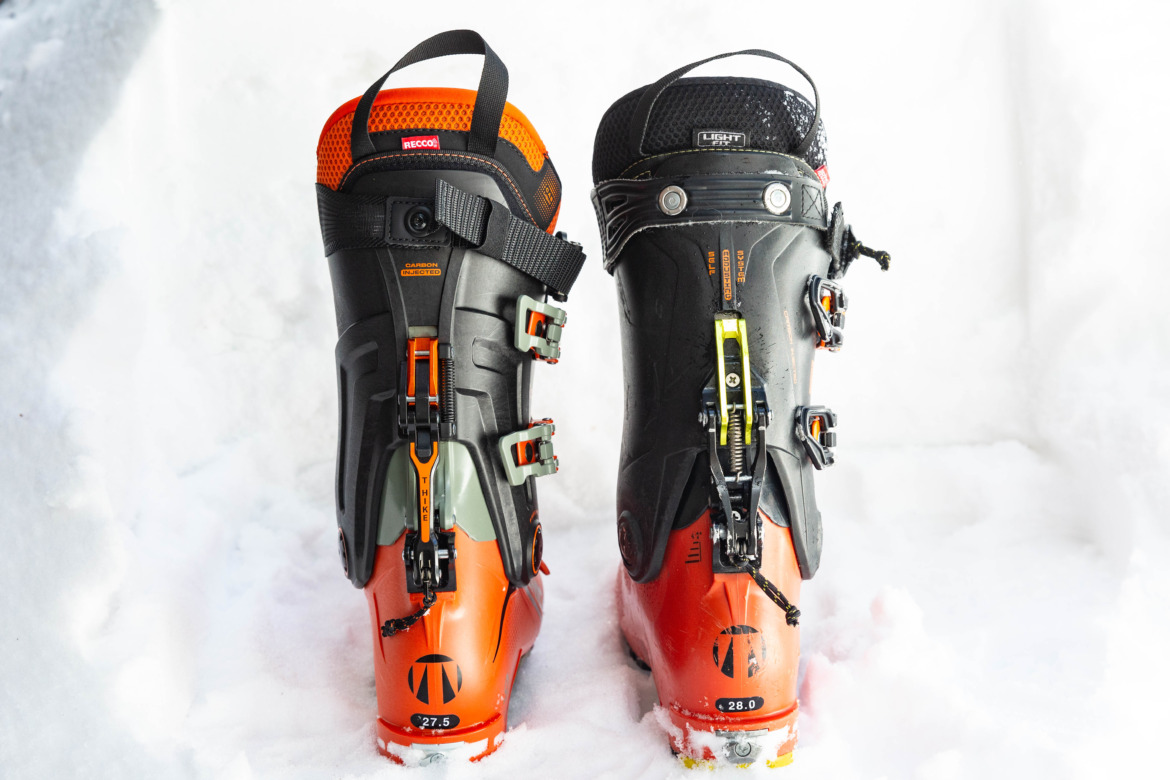
Zero G Tour Pro 1.0 and 2.0 Lock Mechanism Side by Side
I’m overdue putting together a more in-depth review of this boot now that I’ve got around 20 days on the new model, so I’ll try to avoid dumping every stray thought I have on the ZGTP here and cut to the chase. The fit is still narrow (99 last) but should fit most feet better out of the box. That said, the CAS system allows for true bootfitting on the shell and I recommend spending the money there unless you’re lucky on fit (or comfortable doing your own).
The liner is way more comfortable and doesn’t need immediate replacement. This is a big deal. If you spend $900 on a pair of boots like I did on my first ZGTPs, it’s a kick in the nuts to spend another $200+ on aftermarket liners to make them work.
The forward lean increase is a welcome change as well. I never got around to modding my pair and didn’t suffer that much for it. Yes, the boot was upright and I had to adjust my normally aggressive downhill stance but the Raide mod always seemed to be out of stock when I remembered to look for it and most of the time, I’m descending much more casually in the backcountry anyway. The additional 1.5 degrees still won’t be enough for some, but it helps flex the ankle and pull the toes back, letting me choose a snugger sizing. (Note: I sized down to a 27.5 from 28.0 when moving into the new edition. Tight but doable after break-in and bootfitting.)
Who is this boot for? The same people who bought it in 2017-18 to get the lightest boot they could find with something like 130 flex and four-buckle alpine feel and are ready for a new pair. Plus, a few more folks that this year’s updates will bring in. Skiers have more options in this class than when the first edition came out (scroll around this guide and you’ll see plenty), but the improvements keep the Zero G Tour Pro in the lead if you want power at the lightest weight possible and like the narrow fit.
The boot is a compromise. It won’t be light enough for some still, even at around 1300 grams, and skimo types can’t deal with four buckles with fiddly wire clasps on a transition. The downhill performance is great for the weight. Heavier boots like Scarpa’s 4-Quattro Pro ski far better with a more progressive flex, but you pay for that 200 extra grams per boot on longer tours. The Zero G Tour Pro uses a very thin and light Grilamid with lots of carbon that is stiff to the point of being rigid. I weigh 200 pounds but I could see these boots giving lighter skiers a pretty rough ride. Other ZGTP evangelists will claim there’s no downhill downside to the weight savings, but even this Tecnica homer has to admit there are better-skiing four-buckle touring boots. They’re just not this light and uphill-capable.
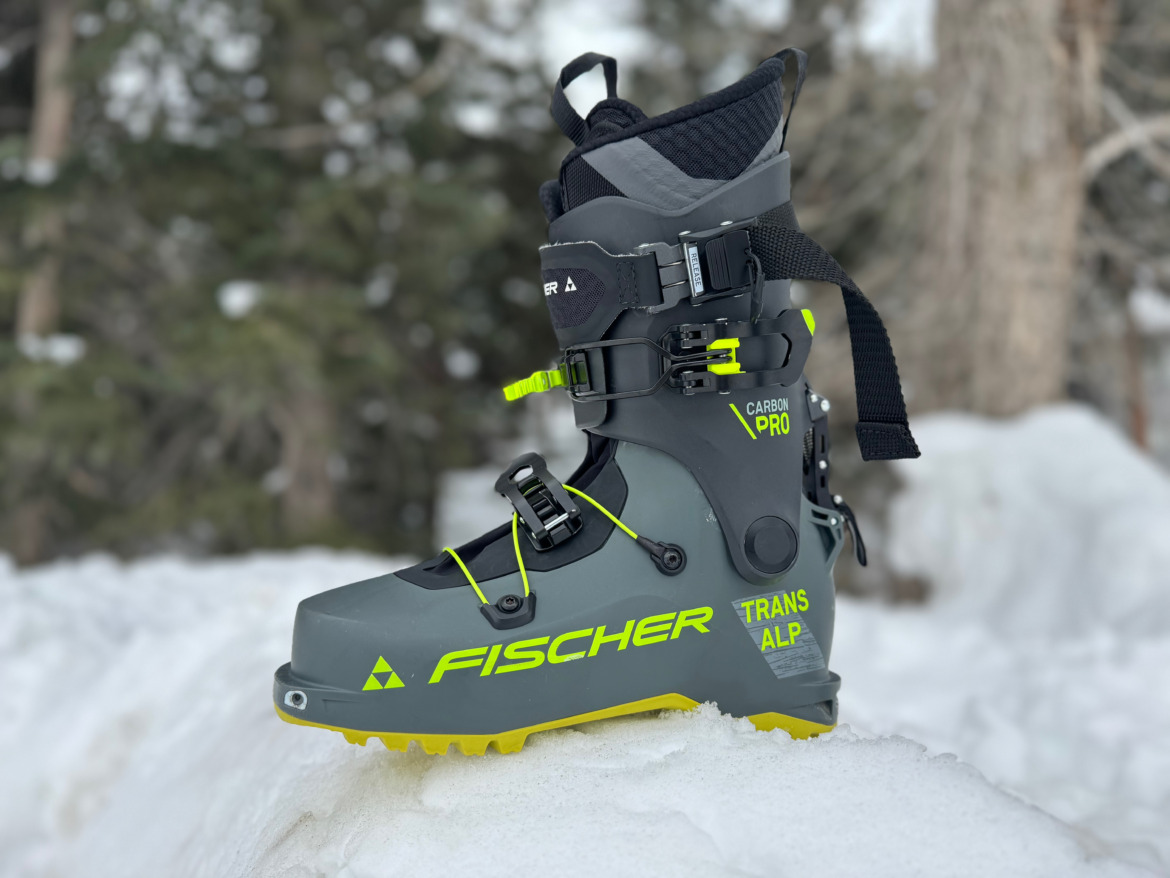
Fischer didn’t skimp on liners for the Transalp Carbon Pro just to shave weight. (314g)
Fischer Transalp Carbon Pro
- Weight: 1,422g (27)
- Claimed Range of Motion: 80°
- Forward Lean: 14° or 17°
- Material: Carbonfused cuff, Pebax Rnew shell
- Flex Index: No official flex rating, close to 120
- Last: 100mm
- Price: $899.95
Great news for skiers with low arches: Fischer’s much-loved Transalp got an upgrade for 23/24 in the Transalp Carbon Pro, a 2-buckled touring boot landing at 1,422g (27/27.5) – right between boots in the ~1kg and 1.5kg+ realms.
Most of their other characteristics land right in the middle too. Carbon-reinforced Pebax Rnew cuffs add stiffness over their predecessors, but Pebax Rnew shells keep the ride and flex enjoyable. They don’t have an official flex rating, but I’d put them close to 120. They had enough power and supportive flex to drive full-sized skis and didn’t feel like overkill on ultralight setups.
The Transalp Carbon Pros are sleek-looking boots. The minimalist buckles and camming power strap do a lot with a little to lock your foot in and eliminate dead space in this medium- to low-volume boot. The walk mode range of motion is good, especially forward. Does it feel like 80 degrees of articulation like the marketing copy claims? Sure, without a foot in there. However, the relatively high shell behind the heel limits some rearward articulation.
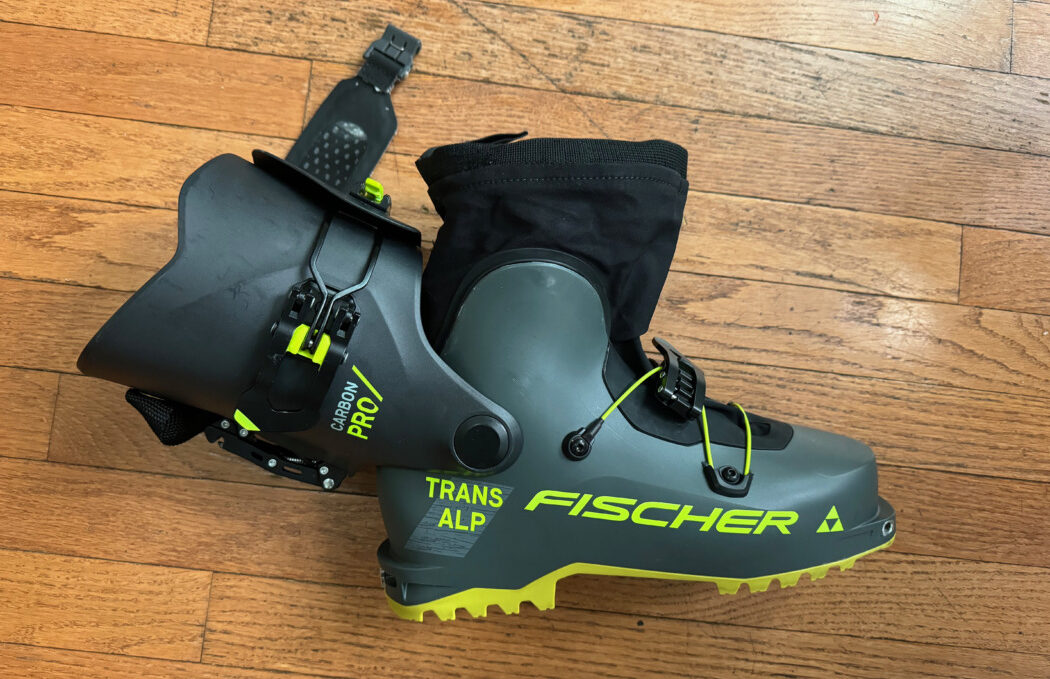
The Transalp Carbon Pro technically has an 80-degree range of motion. but
Overall, the Transalps are solid, versatile, mid-weight backcountry ski boots. Our high-arched brethren should beware, though – these boots are very hard to get into and out of. If you’ve got lower volume, lower arched feet, that’s amazing for you. Slip your foot into a pair or check out the full review to learn more.
I know what you’re going to ask – the Fischer Transalp Carbon Pro is almost the same weight as the Tecnica Zero G Tour Pro, so which one skis better? The Zero Gs ski higher in the flex and more akin to alpine boots, and are stiffer when flipped into ski mode. The Transalps have a very slight edge on the skin track with a bigger range of motion and much less fiddle factor at the transition. They’re both up to the task of driving big skis, but the Transalps feel more natural on slimmer/shorter skis than the Zero G’s.

Scott Cosmos Pro Ski Boot
- Weight: 1,459g (27)
- Claimed Range of Motion: 60°
- Forward Lean: 12° or 14°
- Material: Grilamid Mix
- Flex Index: 130
- Last: 103.5
- Price: $799
My unreasonably high arches, hammertoes, and foot bones in all the wrong places mean touring comfort feels like a myth. It makes getting into and out of most touring boots a painful and drawn out affair that my ski touring partners are tired of hearing about. Slipping into Scott’s new(ish) Cosmos Pro touring boots was a big departure from basically every touring boot I’ve donned in the last five years thanks to the 3-piece Cabrio design, plush liner, and accommodating 103.5mm last. This is a straight up comfortable pair of boots and the easiest to get into on this list.
The Cosmos Pro was an overhaul from Scott last season that Wildsnow readers in particular will appreciate. First of all, the upgrade addressed the faffery around the old liner BOA and Velcro upper strap by nixing the former and replacing the latter with a more traditional buckle. Like most other power-forward touring boots in the last few years, it got the Booster-adjacent hooked camming power strap upgrade. And of course, the evolution to sleek, black Grilamid Mix is tough to miss. The new buckle keeper springs are genuinely solid, too. Scarpa Maestrale and Fischer Transalp, take note.
On the hill, the Cosmos Pros are a smooth and comfortable ride. I can’t overstate that. It’s partly the beefy liner and partly the smooth Cabrio flex profile that Cabrio diehards will recognize. 130 flex is a stretch, but they’re definitely progressive, elastic right off the top, supportive deep into the flex, and powerful enough for big touring skis.
The claimed 60° ROM feels accurate on the skin track. Forward and rearward articulation is solid for boots in this class, but there’s some friction. The with the top buckle fully unhooked, the ROM is just slightly shallower than the new Scarpa Maestrale, but similar to the older Maestrale. Both the Maestral and the Cosmos Pro articulate slightly further than the Fischer Transalp and Tecnica Zero G, but to nobody’s surprise fall short of the F1 XT, Kilo, and Skorpius CR II.
Who is the Cosmos Pro for? Skiers looking for one boot to do it all in the backcountry, big skis or little(ish) skis, especially those with high volume or highly problematic feet. Traditional Maestrale aficionados offended by their new fit or feeling left out by other hard-to-get-into boots on this list (looking at you, Transalp and Zero G) will find a roomier, easy on, easy off friend in the Cosmos Pro with similar, or just a hair less, overall power and ROM.
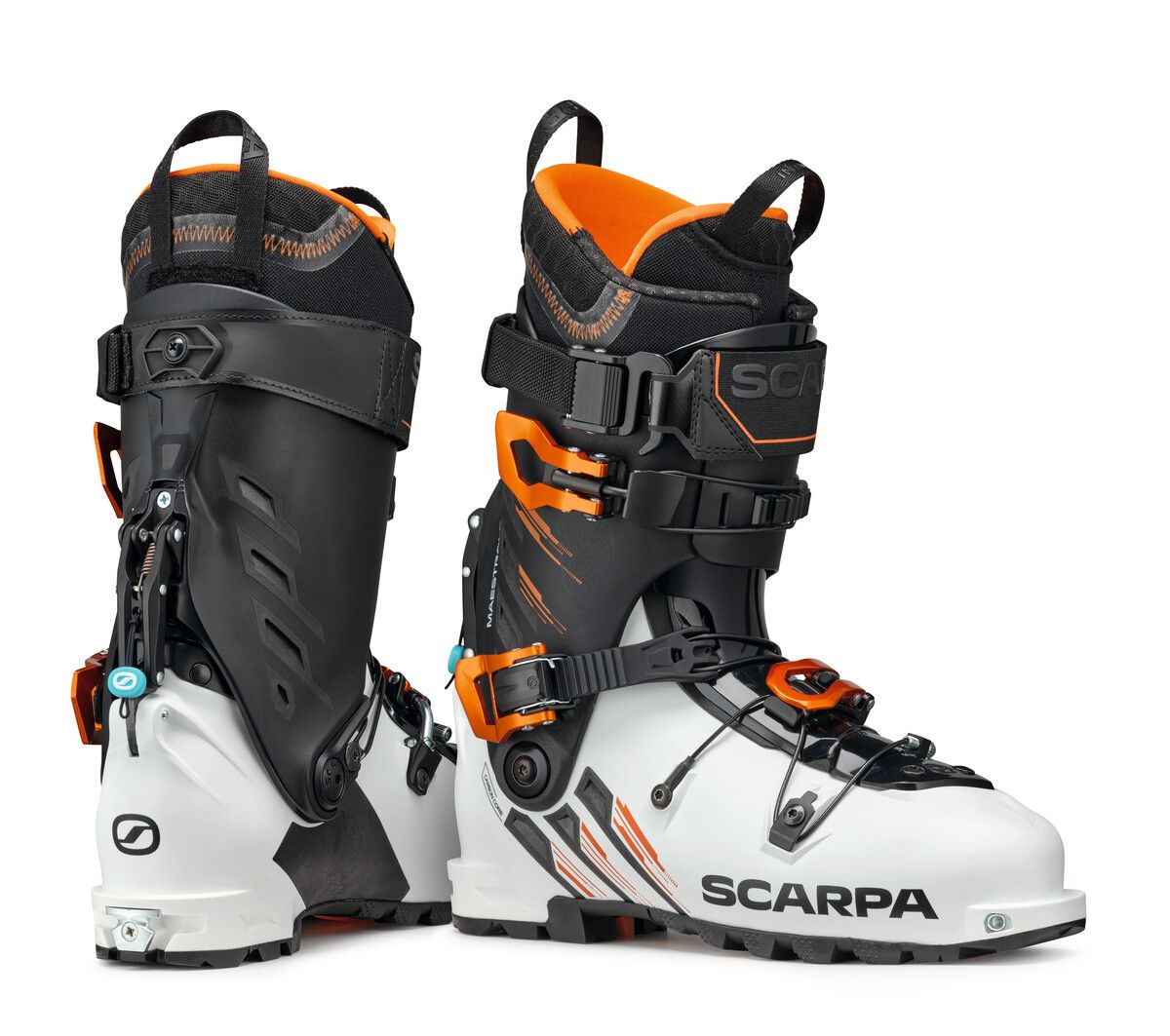
Scarpa Maestrale RS
- Weight: 1,470g (27)
- Claimed Range of Motion: 61°
- Forward Lean: 16° +/- 2°
- Material: Pebax Rnew w/ Carbon Core cuff, Grilamid Bio w/ Carbon Core shell
- Flex Index: 130
- Last: 102
- Price: $949
Scarpa’s Maestrale, the best-selling AT boot lineage of all time, got a quiet (but major) overhaul for 2023/2024 and I’ve been impressed with the upgrade, to say the least. Simply put, this is the best Maestrale yet, hands down.
It all starts with new, lower-volume Grilamid Bio shells with Carbon Core under the arches and an enhanced heel cup that vastly improves heel hold. An accommodating 102mm last should fit most feet, but the shells are distinctly lower volume than previous iterations (a much-needed upgrade). They’re also longer than previous generations, so I ended up sizing down.
On the uphills, a well-broken-in Maestrale RS boasts a sporty and low-friction 61-degree cuff range of motion when the upper buckle is completely unlatched – better than most boots in this class. When they’re snapped into ski mode and the power straps cinched down, the new Maestrale’s skis with an improved progressive flex, engaging elasticity even at slower speeds, and a refined character that the Maestrales of yore have aspired to for over a decade. No, they don’t ski like 130 flex alpine boots. But they have enough power and support to push big skis through big terrain and feel good on your feet all day.
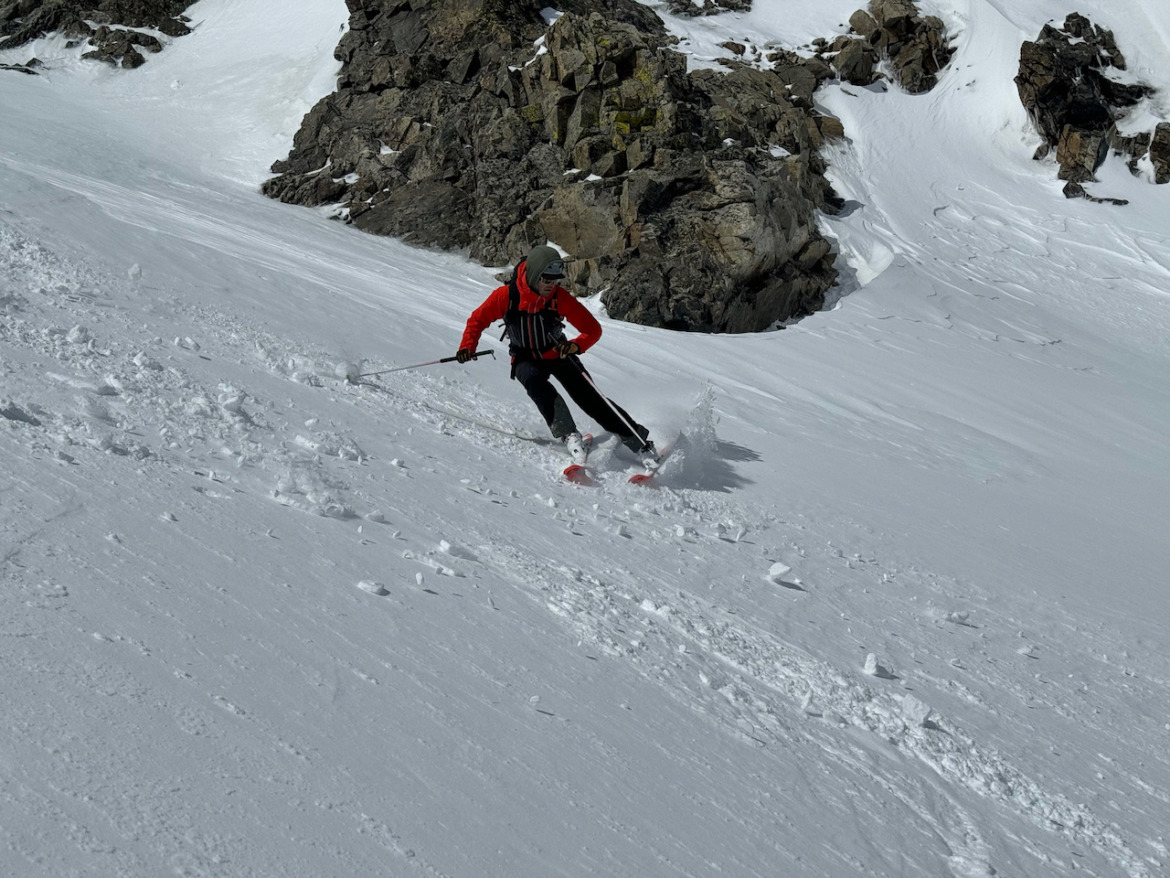
This 125 flex mid-weight boot should be on the shortlist for any backcountry skier looking for a boot to drive their entire quiver of skis, including big powder boards, or one boot to do it all. Could skiers driving smaller skis (>100mm underfoot) get away with something lighter with even more range of motion? Definitely. But the new Scarpa Maestrale is a dang good backcountry ski boot for everyone else looking to balance uphill and downhill performance somewhat evenly.
Read the full review here.
Other Solid Ski Touring Boots Worth Checking Out
There are a lot of boots out there, and, man, are our feet tired (and inflamed) from living in all the ones above. Fellow readers, which new boots have you most intrigued? This guide will continue to expand and evolve as boot manufacturers battle it out.
Here are a few other backcountry ski boots that we’re trying to get our hands on to test that are worth considering if you’re in the market:
Dynafit Ridge Pro
- Weight: 1,250g (27)
- Claimed Range of Motion: 70°
- Forward Lean: 12°-15°
- Material: Polyamide Composite
- Flex Index: 120
- Last: 101
- Price: $899.99
The Boss, Eric “Hoji” Hjorliefson, has been on an innovation bender for the past few years. He and Dynafit just launched the 1,250g Dynafit Ridge Pro using new tech that we haven’t seen before, including a “floating tongue” that supposedly improves fit and reduces touring friction. We also hear that they’re pretty dang powerful for a boot in this weight class. If nothing else, they’re downright interesting and we’ll add them to this guide as soon as we can land a pair to test. WS Editor Justin Park tried on a pair last season but couldn’t get in the right size before they ran out of inventory.
Tecnica Zero G Peak
- Weight: 990g (27)
- Claimed Range of Motion: 75°
- Forward Lean: 13° or 15°
- Material: Carbon Cuff and Carbon co-injected Shell
- Last: 99
- Price: $949.95
A list of the best touring boots on the market would look silly without Tecnica’s very light Zero G Peak. We do not yet have a pair in hand to compare them head to head with their most obvious competitors, the Scarpa F1 XT and the La Sportiva Kilo. Fret not, you can find Lisa Van Sciver’s full review on Wildsnow.
Dalbello Quantum Free
- Weight: 1,300g (27)
- Claimed Range of Motion: tBD
- Forward Lean: TBD
- Material: Polyamide Composite
- Flex Index: 130
- Last: 100
- Price: $899.99
At a claimed 130 flex and a sporty 1300g, the Quantum Free Pro’s are the current and most “freeridy” iteration of Dalbello’s innovative X-Dual Link cuff once called a “pant eater” by Wildsnow writers. We need to get many more turns on these fierce-looking mid-weights before spilling the ink, so stay tuned on this space. In the meantime, they’re on sale at EVO for $514.
Scarpa 4 Quattro Pro
- Weight: 1555g (27)
- Claimed Range of Motion:
- Forward Lean: 19° +/- 2-4°
- Material: Pebax Rnew
- Flex Index: 130
- Last: 100
- Price: $949.99
Scarpa calls the new 4 Quattro Pro the “lightest boot in its class”, but it’s the heaviest on our list. With the power and performance you get out of the lighter backcountry ski boots recommended above, it’s hard to justify the added weight for hardcore touring. The aggressively forward 4 Quattro Pro gets a nod, however, because of how well it skis. We’ve driven carving skis on-piste at the resort with this boot and weren’t disappointed. This isn’t a backcountry ski boot for epic multi-day adventures, but if you’re chasing pow on shorter laps, it might be worth hauling the extra grams of the 4 Quattro Pro to get alpine boot power. And if you’re on a boots budget and have to consider a hybrid boot, this is one of the few that keeps the weight manageable without compromising your resort skiing capabilities. We need more touring days on them to assess the uphill experience and the limitations the weight put on us going further.
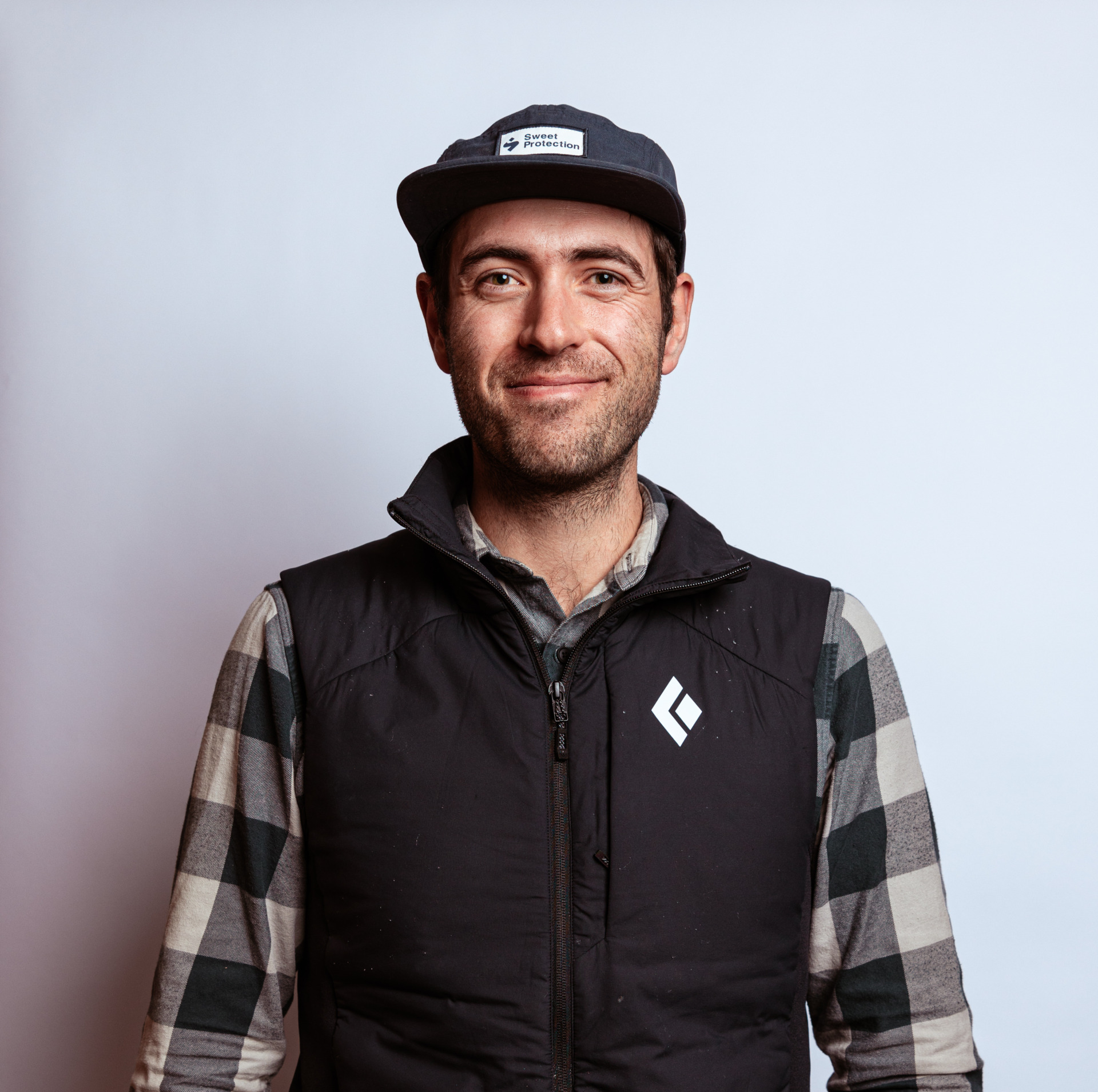
Bergen Tjossem is a ski fanatic, conservation professional, and nature nerd based in Vail, Colorado. His life and career have centered around protecting the natural environment and public lands that raised him, but as Ed Abbey put it, “It is not enough to fight for the land; It is even more important to enjoy it.” So when he’s not working his day job, you’ll find Bergen ski touring before dawn, ice climbing in the dark, running trails until his legs fall off, skiing 13er’s with his friends, or making the world’s best pizza with his wife, Rachel. You can find him on Instagram.

